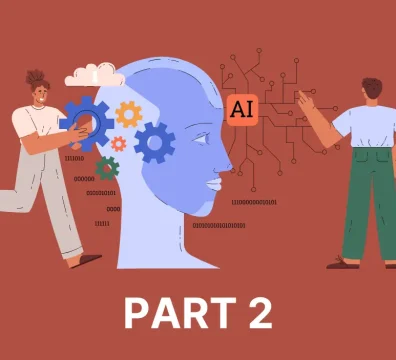The rise of generative AI in eCommerce marks one of the most profound transformations in the history of digital business. As technology continues to blur the boundaries between creativity and computation, generative AI in eCommerce is redefining how online stores create, personalize, and deliver shopping experiences. From automated content creation to intelligent product visualization and conversational shopping assistants, generative AI in eCommerce has evolved beyond automation—it has become the creative engine of the digital economy.
At its core, generative AI refers to artificial intelligence capable of producing entirely new outputs—text, images, videos, designs, and even 3D assets—based on patterns learned from vast datasets. Unlike traditional AI, which relies on rules or predictive models to analyze existing data and make decisions, generative AI in eCommerce uses advanced neural architectures such as Generative Adversarial Networks (GANs), diffusion models, and large language models (LLMs) to generate new, high-quality content. Traditional AI might recommend a product based on your browsing history, but generative AI in eCommerce can create an entire product description, visual, or marketing campaign tailored precisely to your behavior and preferences.
Generative AI in eCommerce is a game-changer because it enables brands to operate at a scale and speed that human teams alone could never achieve. Instead of manually producing thousands of product descriptions or photoshoots, retailers can now generate unique, SEO-optimized text and lifelike visuals in seconds. Generative AI in eCommerce can also simulate realistic product models, craft personalized video ads, or compose entire marketing campaigns that adapt to consumer sentiment in real time. For customers, this translates into immersive, hyper-personalized shopping experiences that feel natural and emotionally engaging.
Moreover, generative AI in eCommerce opens new frontiers for innovation—empowering startups and global enterprises alike to compete through creativity rather than capital. It democratizes access to world-class design, branding, and communication by lowering production barriers. As a result, generative AI in eCommerce is not just improving efficiency—it is reshaping the competitive landscape, where imagination, data, and intelligence converge.
Table of Contents
Understanding Generative AI and Its Core Technologies
Generative AI in eCommerce represents a monumental leap forward in how digital systems understand, create, and personalize online experiences. Unlike earlier AI systems that relied solely on pattern recognition or data classification, generative AI in eCommerce has the unique ability to produce original outputs—text, visuals, videos, and even designs—based on learned data structures. It’s not simply about predicting the next likely user action; it’s about creating something new and valuable that directly enhances engagement, conversion, and creativity across digital commerce ecosystems.

This section will dive into the fundamentals of generative AI in eCommerce: how it works, what differentiates it from predictive AI, and which technologies and models power its rapid evolution. From GANs and diffusion models to Large Language Models and multimodal AI, these innovations form the backbone of generative AI in eCommerce applications—fueling product descriptions, virtual try-ons, marketing content, and visual merchandising at unprecedented scale.What is Generative AI?
Generative AI in eCommerce is a branch of artificial intelligence that focuses on creating new data, designs, and digital content rather than merely analyzing existing information. In traditional AI systems, algorithms are primarily trained to detect patterns, classify inputs, or predict outcomes based on historical datasets. Generative AI, however, takes this one step further—it uses deep learning architectures to generate original and contextually relevant content that aligns with brand tone, customer intent, and market trends.
How Generative Models Work
Generative AI in eCommerce relies on several foundational architectures, each with distinct strengths and capabilities:
- Generative Adversarial Networks (GANs): GANs consist of two neural networks—the generator and the discriminator—that compete against each other. The generator creates new data (for instance, product images), while the discriminator evaluates whether the output looks real or fake. Through repeated iterations, GANs learn to generate hyper-realistic images, videos, and even 3D renderings. In eCommerce, GANs are used to create synthetic product photos, virtual models, and background variations for catalog updates without the need for expensive photo shoots.
- Transformers: The foundation of many large language models, transformers excel at processing sequential data such as text. They use mechanisms called “attention layers” to understand context and relationships between words or tokens. In generative AI in eCommerce, transformer-based models are capable of writing product descriptions, customer reviews, and ad copies tailored to specific audiences while maintaining brand voice consistency.
- Diffusion Models: These models generate images by progressively “denoising” random noise into coherent visuals. Diffusion models, such as those behind DALL·E or Stable Diffusion, are now widely applied in eCommerce to produce creative imagery, lifestyle scenes, and AI-generated fashion photography. They excel at producing aesthetic, photorealistic results that can adapt to specific lighting, environments, or cultural contexts.
Together, these generative architectures form the creative backbone of generative AI in eCommerce, enabling businesses to produce endless variations of marketing assets, product visuals, and personalized experiences—all without manual intervention.
Predictive vs. Generative AI
The main distinction between predictive and generative AI lies in their purpose:
- Predictive AI focuses on forecasting or decision-making based on existing data. It’s used for demand prediction, inventory optimization, or recommending products.
- Generative AI, on the other hand, focuses on creation. It produces new data—descriptions, videos, and visuals—based on the patterns it has learned.
While predictive AI answers the question “What’s next?”, generative AI answers “What can we create next?”
In eCommerce, both systems often work together: predictive AI identifies customer needs or market trends, while generative AI in eCommerce produces the creative content, personalized experiences, and visual materials to meet those demands.
Key Advantages of Generative AI for eCommerce Data
Generative AI in eCommerce provides unique data-driven benefits that traditional systems cannot match:
- Synthetic Data Creation: When training data is limited, generative AI can produce synthetic datasets that simulate real-world customer interactions, enabling better personalization algorithms and recommendation systems.
- Personalization at Scale: Generative models adapt text, imagery, and offers to each customer’s preferences, browsing behavior, and demographic data—creating micro-personalized journeys across websites, emails, and social media ads.
- Scalability and Efficiency: Businesses can automate creative production pipelines, drastically reducing time and costs associated with copywriting, photo editing, and design tasks.
Ultimately, generative AI in eCommerce doesn’t just enhance what already exists—it empowers digital retailers to re-imagine how creativity, data, and technology merge to deliver seamless, intelligent, and engaging shopping experiences.
Use Cases of Generative AI in eCommerce
Generative AI in eCommerce has rapidly evolved from an experimental concept into a transformative force that redefines how online businesses operate, market, and interact with their customers. Instead of simply automating routine processes, generative AI in eCommerce brings creative intelligence to every layer of the digital retail ecosystem. It empowers brands to generate new content, visuals, designs, and experiences that are dynamic, personalized, and data-driven—all while maintaining a consistent brand identity.

From auto-generating product descriptions and creating realistic visuals to powering virtual fashion models, producing videos, and enabling intelligent product discovery, generative AI in eCommerce has become an all-encompassing creative partner. Each use case leverages the same underlying principle: machines trained on large datasets can now “understand” human preferences and generate content that feels naturally designed for individual consumers.
Generative AI Text
Generative AI text is the foundation upon which much of generative AI in eCommerce is built. Text generation models, trained on vast datasets of human language, enable businesses to produce natural, persuasive, and contextually appropriate content across their online ecosystem. From crafting engaging product descriptions to creating entire marketing campaigns, generative AI in eCommerce uses language as a powerful tool for storytelling and personalization.
At its core, generative AI text systems are designed to understand intent, tone, and structure. Unlike traditional automation, which can only fill predefined templates, generative AI in eCommerce generates language dynamically, adapting to product details, audience segments, and even emotional triggers that influence purchase behavior. This has fundamentally changed how brands communicate value to their customers.
Generative AI for Content and Copywriting
The use of generative AI in eCommerce for content and copywriting spans multiple dimensions of digital marketing and product management. Businesses can now create vast amounts of copy in a fraction of the time, while maintaining quality, tone, and relevance.
Key applications include:
- Product descriptions: Generative AI in eCommerce can automatically generate thousands of unique and SEO-friendly product descriptions based on item specifications, material data, and brand guidelines. It ensures that every listing highlights the most relevant features and benefits, improving both readability and conversion rates.
- Category and landing page content: For eCommerce stores managing hundreds of categories, AI-generated content helps maintain consistency and improve search engine ranking by optimizing headers, keywords, and metadata at scale.
- Blog articles and promotional materials: Generative AI in eCommerce assists marketing teams by drafting full-length articles, campaign slogans, and taglines that align with the brand’s marketing objectives. The technology can adapt tone and style based on audience preferences, ensuring that content feels personalized to specific demographics.
- Email and ad copy: Generative AI tools can write email subject lines, newsletters, and social ads that optimize click-through rates by analyzing user behavior, engagement patterns, and contextual relevance.
- Multilingual and localized content: Generative AI in eCommerce enables instant translation and localization of product pages, adapting not only the language but also the cultural nuances and idiomatic expressions suitable for each target market.
Through these capabilities, generative AI in eCommerce transforms content creation from a linear, human-dependent process into a data-driven and scalable operation. It ensures that customers around the world experience consistent messaging that reflects both global brand identity and local authenticity.
Generative AI in eCommerce also promotes creativity within marketing teams. Instead of starting from scratch, copywriters can use AI-generated drafts as inspiration, focusing on refining narratives and adding emotional depth. This human-AI collaboration allows for a balance between efficiency and originality, helping brands communicate with greater agility in competitive markets.
Chatbots and Conversational AI
Conversational AI represents another transformative use case of generative AI in eCommerce. These systems leverage natural language processing and generative text models to simulate human-like dialogue in real time. Unlike traditional chatbots that rely on scripted responses, generative AI in eCommerce powers chat interfaces capable of understanding context, sentiment, and intent—providing customers with meaningful interactions that feel personal and immediate.
Generative AI in eCommerce enhances conversational experiences across multiple touchpoints:
- Customer support: AI-powered chatbots can answer common questions, assist with order tracking, handle returns, and offer product recommendations instantly, reducing wait times and improving satisfaction. The generative nature of these models ensures flexibility—they can respond creatively to unexpected queries instead of relying on fixed templates.
- Conversational commerce: Generative AI in eCommerce enables shoppers to make purchases directly through chat interfaces. Customers can describe what they are looking for—such as “a lightweight travel bag under $100”—and the AI instantly suggests relevant products, complete with generated descriptions and visuals.
- Personalized recommendations: Generative AI-driven chatbots learn from each interaction to refine future suggestions. Over time, they develop an understanding of a user’s style, preferences, and behavior, creating a truly individualized shopping experience.
- Voice assistants and multimodal interaction: With advancements in speech-to-text and text-to-speech technologies, generative AI in eCommerce extends beyond text chat to voice-based shopping experiences. This allows users to browse, compare, and buy products through natural speech, merging convenience with personalization.
- Emotional intelligence in communication: Modern conversational AI systems are equipped with sentiment analysis, enabling them to respond empathetically to customer emotions—offering apologies, congratulations, or encouragement when appropriate.
Generative AI in eCommerce chat systems also improve internal efficiency. By handling repetitive customer queries, they free up human agents to focus on complex issues that require judgment or escalation. Furthermore, AI can analyze thousands of chat interactions to identify common pain points, providing valuable insights for improving products, logistics, or user interfaces.
The biggest advantage of conversational AI lies in its ability to humanize digital commerce. Through natural language interaction, generative AI in eCommerce bridges the emotional gap between customer and brand, offering guidance, companionship, and confidence throughout the buying journey. The shopping experience becomes less transactional and more conversational, transforming the online store into a living, responsive entity that communicates fluidly across channels.
AI Image Generator for eCommerce
One of the most visually transformative applications of generative AI in eCommerce is the rise of AI image generators. In an era when product visuals play a crucial role in influencing customer behavior, businesses are using generative AI in eCommerce to produce lifelike, dynamic, and customizable imagery at a fraction of traditional costs. Visual content is the foundation of online retail success; it determines how effectively a product captures attention, communicates value, and evokes emotional responses. With AI image generation, companies no longer depend solely on traditional photography, which can be expensive, time-consuming, and limited by logistics. Generative AI in eCommerce enables the creation of images that are consistent, high-quality, and instantly adaptable to multiple contexts—from product detail pages to advertisements and social media campaigns.

The technology behind these AI image generators is powered by advanced neural networks such as diffusion models and Generative Adversarial Networks (GANs). These models can generate new images based on textual prompts, existing photos, or brand guidelines, making them highly versatile tools for digital commerce. Through machine learning and deep visual understanding, generative AI in eCommerce can simulate lighting conditions, materials, backgrounds, and even model appearances, ensuring that each image aligns with the brand’s aesthetic and target audience.
Transforming Product Photography with AI
Traditional product photography has long been a bottleneck in eCommerce operations. Businesses often face challenges such as scheduling photoshoots, hiring photographers, managing lighting conditions, editing large image libraries, and ensuring consistency across product lines. Generative AI in eCommerce removes these constraints entirely by enabling automated visual creation that replicates or exceeds professional photography standards.
The transformation is most visible in several key areas:
- Generating product-on-white images that meet marketplace requirements for platforms like Amazon, Shopee, or Lazada. AI systems can instantly render these images from 3D data or basic sketches, ensuring visual uniformity.
- Creating lifestyle and contextual imagery that shows products in use. For example, a furniture brand can use generative AI in eCommerce to place a sofa in multiple home environments, changing styles, colors, and lighting conditions within seconds.
- Generating seasonal or thematic backgrounds for campaigns such as holidays or regional promotions. A single product image can be reimagined across dozens of visual contexts, allowing retailers to localize campaigns efficiently.
- Enabling virtual model generation for apparel and fashion retailers. Instead of organizing photo shoots with human models, brands can use generative AI in eCommerce to produce hyper-realistic digital models that reflect diverse body types, ethnicities, and aesthetics.
The introduction of AI-based image generation has completely redefined how visuals are produced. What once required multiple stakeholders—photographers, stylists, editors, and art directors—can now be accomplished through automated creative pipelines. This shift not only enhances operational efficiency but also democratizes visual production, allowing small businesses to achieve the same visual sophistication as global retail giants.
AI Image Generator Tools in eCommerce
As the demand for visual content grows, the market for AI image generator tools in eCommerce continues to expand rapidly. These tools use cutting-edge generative algorithms to produce original and high-quality images that adhere to brand style and marketing objectives. They enable teams to generate and customize visuals at scale without needing advanced technical skills.
Some widely adopted AI image generator tools in eCommerce include:
- DALL·E by OpenAI: Known for its ability to generate high-resolution, imaginative visuals from textual descriptions, ideal for product variations and advertising campaigns.
- Midjourney: Favored by creative teams for its artistic rendering capabilities and control over visual style and lighting, widely used for promotional imagery and storytelling.
- Adobe Firefly: Integrated into Adobe’s ecosystem, allowing seamless editing and design enhancement through AI. It provides tools for background removal, object generation, and color matching.
- Runway ML and Leonardo AI: Popular among fashion and retail designers for generating model photos, fashion lookbooks, and video-ready assets.
- Stable Diffusion: Open-source solution that provides flexible control for creating customized visuals aligned with brand identity.
These tools are not just technical innovations—they are creative collaborators. Generative AI in eCommerce allows marketing and design teams to experiment with visual styles, generate multiple variants for testing, and instantly adapt assets for diverse audiences. For example, a single clothing item can be displayed in multiple locations—urban, coastal, or indoor settings—without the need for multiple photo sessions. This flexibility empowers brands to tailor their imagery to customer demographics and campaigns effortlessly.
Moreover, AI image generators can integrate with eCommerce management systems. By linking with Product Information Management (PIM) tools or digital asset management platforms, generative AI in eCommerce ensures that newly created visuals automatically align with product specifications and catalog updates. This integration results in an organized, automated visual content ecosystem that keeps pace with the constant demands of online retail.
Cost and Workflow Impact
The cost and workflow impact of AI image generation represents one of the most significant business advantages of generative AI in eCommerce. Traditional photography involves a lengthy and resource-heavy process: booking studios, hiring photographers, arranging props, managing logistics, and performing post-production editing. For enterprises managing thousands of products, this process can be prohibitively expensive and slow.

Generative AI in eCommerce fundamentally alters this equation by minimizing human effort and compressing production timelines. The benefits include:
- Dramatic reduction in production costs. Businesses can eliminate the need for repeated photoshoots and post-processing expenses. The AI model generates new visuals instantly, significantly cutting total image creation costs.
- Shortened time-to-market. Instead of waiting weeks for visual assets, teams can generate and approve images within hours, allowing new products to be published and promoted immediately.
- Streamlined collaboration between marketing, design, and merchandising teams. AI-generated visuals can be instantly reviewed, refined, and deployed across all digital channels.
- Consistency across platforms and markets. Generative AI in eCommerce ensures that every product image follows the same branding rules, from color palette and composition to mood and message.
- Sustainability improvements by reducing the environmental impact of physical shoots, travel, and material usage.
By automating repetitive creative processes, generative AI in eCommerce not only reduces operational costs but also allows teams to focus on high-level strategy, design innovation, and storytelling. It democratizes visual content creation by making advanced imaging capabilities accessible to businesses of all sizes—from independent artisans to multinational corporations.
AI Video Generator for eCommerce
Video has become the most powerful medium in digital commerce, driving engagement, trust, and conversion rates. In this environment, generative AI in eCommerce is fundamentally reshaping how video content is created, customized, and distributed. Instead of relying on costly production teams, filming equipment, and editing software, businesses can now use AI video generators to produce dynamic, on-brand videos from simple text prompts, product data, or image sets. This shift from manual video creation to AI-driven generation is enabling eCommerce companies to scale storytelling at unprecedented speed and precision, ensuring every customer interaction feels personalized, relevant, and immersive.

Generative AI in eCommerce for video production integrates the capabilities of large language models, diffusion models, and multimodal systems. These technologies enable AI to interpret input text, generate visual sequences, synthesize voices, and even simulate natural human gestures or facial expressions. The result is professional-quality video content that can be automatically generated, localized, and optimized for various platforms—all while maintaining the brand’s visual identity.
Rise of Video Commerce and Dynamic Storytelling
The rise of video commerce is closely linked with changing consumer behavior. Modern shoppers are no longer satisfied with static images or text—they expect motion, context, and emotion. Generative AI in eCommerce has responded to this shift by making video creation accessible to every business, regardless of size or resources.
Video commerce powered by generative AI in eCommerce enhances storytelling in several critical ways:
- Personalized video content: Generative AI can automatically create tailored videos for each customer segment. For example, an online skincare brand can generate multiple video versions that feature different models, languages, or climates depending on the viewer’s region.
- Explainer and demo videos: Instead of filming product tutorials, generative AI in eCommerce can transform written instructions and product data into animated demonstrations with realistic movement and voice-over narration.
- AI-driven storytelling: Generative models can analyze customer data, reviews, and engagement trends to design storylines that emotionally connect with audiences. The result is marketing content that feels personal, contextual, and persuasive.
- Interactive product showcases: Using generative AI in eCommerce, brands can create interactive video experiences where products respond to user choices in real time. A user selecting different colors or models can instantly see updated visuals and prices in video form.
The integration of generative AI in eCommerce video tools means that businesses no longer depend on traditional production cycles. Videos can be refreshed as often as product lines change, keeping marketing campaigns vibrant and up-to-date. This constant evolution of storytelling ensures that customers stay engaged while brands maintain an agile creative edge.
Top Tools and Workflows
The ecosystem of AI video generation tools in eCommerce has expanded dramatically, offering platforms designed to automate everything from scriptwriting to voice synthesis and animation. Generative AI in eCommerce now supports full-cycle video creation, transforming text or image inputs into complete marketing assets ready for deployment.
Some of the most effective tools include:
- Pika Labs: A leading diffusion-based video generator capable of producing cinematic visuals and smooth transitions directly from text prompts or product photos. Widely used in eCommerce for creating lifestyle and brand videos.
- Synthesia: Specializes in avatar-based video generation, allowing businesses to create AI presenters that can narrate product introductions or tutorials in multiple languages without recording a single frame.
- Runway ML: Provides end-to-end video editing and generation capabilities using AI. It can automatically replace backgrounds, modify lighting, or create motion from still images—ideal for fashion and interior design eCommerce.
- Veed.io and Lumen5: Focus on social media and ad formats, converting product descriptions or blog content into short, platform-optimized videos with transitions, captions, and soundtracks.
- HeyGen: Enables brands to create hyper-realistic spokesperson videos for product promotions and personalized customer messages.
In terms of workflow, generative AI in eCommerce video creation typically follows a structured but highly automated pipeline:
- Input Preparation: Brands feed the AI with basic data—such as product information, marketing copy, or brand guidelines.
- Prompt Engineering: Creative teams craft text prompts or scenarios describing desired visuals, tone, and duration.
- Video Generation: The AI tool synthesizes visuals, animations, and audio according to the prompt, producing fully formed videos in minutes.
- Localization and Personalization: Generative AI in eCommerce automatically adapts the videos for different regions, languages, or target demographics.
- Deployment and Optimization: The generated videos are tested across marketing channels, with AI-driven analytics determining which variations perform best.
This workflow drastically reduces production time while maintaining high creative quality. What once took weeks and multiple departments can now be achieved in hours through AI-driven automation.
Generative AI in eCommerce not only streamlines content creation but also improves flexibility. If a product changes or new seasonal branding is introduced, AI can instantly regenerate all corresponding videos to match the updated theme—ensuring marketing materials remain consistent, relevant, and on-brand.
Social Media and Short-form Video Integration
In today’s fast-paced digital landscape, social media platforms are the driving force behind brand visibility and consumer engagement. Generative AI in eCommerce plays a central role in helping brands produce a continuous stream of visually appealing, short-form video content tailored for platforms such as TikTok, Instagram Reels, YouTube Shorts, and Facebook Stories.
Generative AI in eCommerce optimizes short-form video marketing through several impactful functions:
- Content repurposing: AI can automatically convert long-form product videos into short clips, highlight reels, or teasers customized for each platform’s dimensions and algorithms.
- Automated trend adaptation: Generative AI monitors social media trends and automatically generates content in the same style or tone, keeping brands aligned with current consumer interests.
- Localized engagement: Videos can be generated with region-specific backgrounds, actors, or voiceovers, allowing eCommerce brands to localize campaigns instantly without additional production costs.
- Real-time dynamic ads: Generative AI in eCommerce allows ad platforms to generate video variants dynamically based on user data. For example, an apparel retailer can show different outfit combinations depending on weather or location.
- Data-driven optimization: AI continuously tests variations of video length, caption style, and visuals to identify the highest-performing combination, maximizing click-through rates and conversions.
By integrating AI video generation into social media workflows, eCommerce businesses can maintain a consistent content cadence and respond faster to digital trends. Generative AI in eCommerce ensures that brands remain relevant in a landscape where video content often dictates market visibility.
Furthermore, short-form AI-generated videos enhance discoverability through algorithms that prioritize engagement and freshness. This enables smaller retailers to compete effectively with larger brands by generating the same volume and quality of visual content, closing the gap in digital exposure and storytelling capability.
AI-Generated Models for Fashion eCommerce
The fashion industry has always thrived on visual storytelling, creativity, and innovation. As digital transformation continues to reshape retail, generative AI in eCommerce is leading a revolution in how fashion products are presented, modeled, and personalized. Traditional fashion photography, while visually rich, is often limited by logistics, costs, and time constraints. Generative AI in eCommerce, on the other hand, allows brands to create hyper-realistic digital models, virtual try-on experiences, and immersive product visualizations that redefine how customers interact with fashion online.

The use of AI-generated models in fashion eCommerce bridges creativity with technology, providing limitless opportunities to visualize products, democratize design, and promote sustainability. These virtual models can adapt to brand aesthetics, body diversity, and customer data, creating inclusivity and personalization at scale. Generative AI in eCommerce transforms the way fashion is conceptualized, displayed, and purchased—turning digital fashion into an interactive, data-driven experience.
Virtual Models and Fashion Visualization
One of the most significant breakthroughs of generative AI in eCommerce is its ability to produce lifelike virtual models. Unlike traditional photography, which requires hiring models, photographers, stylists, and studios, AI-generated models can be created instantly from data inputs and brand guidelines. These models look natural, expressive, and adaptable across various product categories—from casual wear to haute couture.
The integration of generative AI in eCommerce for fashion visualization brings numerous benefits:
- Diverse representation: Brands can create virtual models representing various ethnicities, skin tones, ages, and body types. This inclusivity enhances consumer trust and helps customers better visualize how clothing fits real-world diversity.
- Adaptability and scalability: AI-generated models can be reused and customized across seasons, campaigns, or collections. A single virtual model can be digitally “styled” with new outfits, poses, and backdrops, eliminating the need for recurring photoshoots.
- Speed and creativity: Generative AI in eCommerce enables creative experimentation. Designers and marketers can test different colors, fabrics, or lighting instantly, generating visuals for product listings, lookbooks, and social media.
- Consistency in branding: Since AI-generated models are designed based on brand identity, the resulting visuals remain consistent across marketing materials and online platforms.
Virtual models created through generative AI in eCommerce enhance realism and interactivity. Customers can see how garments look in motion, visualize textures and fabrics in detail, and even engage with 3D model views. This new form of digital fashion presentation enriches storytelling while eliminating the physical limitations of traditional photography.
Virtual Try-On and Personalization
Beyond static modeling, generative AI in eCommerce enables the next level of fashion engagement through virtual try-on technology. This innovation combines generative imagery with computer vision and augmented reality (AR) to simulate how clothes fit individual shoppers. By integrating customer measurements, preferences, and visual data, brands can offer personalized, realistic, and immersive try-on experiences that bridge the gap between physical and digital retail.

Generative AI in eCommerce supports virtual try-on in several transformative ways:
- Personalized fitting experiences: Customers can upload their photo or body measurements to see how clothing would appear on a virtual representation of themselves. The AI adjusts garment draping, shadows, and movement dynamically.
- Realistic texture and material rendering: Generative models simulate fabric behavior—how silk flows or how denim folds—allowing for a more authentic visual impression of fit and feel.
- Omnichannel integration: Virtual try-on experiences powered by generative AI in eCommerce can be embedded across websites, mobile apps, and AR mirrors in physical stores, creating seamless cross-channel consistency.
- AI styling recommendations: Beyond fitting, generative AI suggests outfit combinations, complementary accessories, and seasonal looks based on the shopper’s preferences and browsing history.
This personalization transforms online shopping into an interactive and confidence-building experience. Generative AI in eCommerce not only improves engagement but also significantly reduces return rates, one of the biggest cost burdens in online fashion retail. When customers can accurately visualize fit and style before purchasing, satisfaction increases, and post-purchase friction decreases.
Virtual try-on powered by generative AI in eCommerce also enables new retail formats such as digital showrooms and metaverse fashion experiences, where users can engage with brands in immersive, avatar-based environments. These innovations are redefining customer expectations and setting new benchmarks for digital commerce personalization.
Sustainability and Accessibility Impact
Sustainability is a growing priority in the global fashion industry, and generative AI in eCommerce plays a vital role in addressing environmental and social challenges. Traditional fashion production and marketing involve significant waste—from physical samples to frequent travel and high resource consumption during photoshoots. By digitizing product visualization and content creation, generative AI in eCommerce drastically reduces the industry’s ecological footprint while enhancing accessibility and inclusivity.
The sustainability and accessibility benefits include:
- Reducing waste through digital samples: Generative AI in eCommerce allows designers to visualize prototypes and create virtual samples before physical production. This minimizes material waste and overproduction.
- Lowering carbon emissions: By eliminating the need for global photoshoots, shipping samples, or maintaining physical studios, brands can significantly reduce their carbon output.
- Promoting inclusivity and accessibility: AI-generated models reflect a broader range of identities and abilities, giving underrepresented communities visibility in the fashion space. This inclusivity fosters customer trust and emotional connection.
- Encouraging conscious consumerism: Generative AI in eCommerce can simulate how items will look and wear over time, helping customers make more informed and sustainable purchase decisions.
- Reducing returns and logistics waste: Better visualization and virtual try-on accuracy lead to fewer returns, minimizing packaging waste and reverse logistics emissions.
Generative AI in eCommerce promotes a new model of sustainable innovation—one that aligns digital creativity with environmental responsibility. By removing the dependency on physical production cycles, it empowers brands to experiment virtually, innovate faster, and bring eco-friendly practices into every layer of their operations.
AI Search Engine for eCommerce
Search functionality is one of the most critical components of any eCommerce platform, directly influencing how customers discover products and make purchase decisions. Yet, traditional search engines—based on rigid keyword matching—often fall short of understanding human intent. Generative AI in eCommerce has revolutionized this process, transforming product discovery into a more intuitive, conversational, and personalized experience. Instead of requiring users to type exact keywords, generative AI in eCommerce interprets natural language, visual cues, and behavioral data to provide contextually relevant results that feel human-like and engaging.

Through generative AI, search in eCommerce is no longer limited to simply retrieving results—it is now about discovery, personalization, and predictive understanding. By combining text, image, and even voice-based inputs, generative AI in eCommerce is shaping a new generation of search experiences that connect users to products faster, smarter, and more meaningfully.
From Keyword Search to Generative Discovery
The transition from traditional keyword-based search to generative discovery marks one of the most impactful shifts in digital retail. Historically, eCommerce search engines operated on structured data and direct keyword matching, which often led to irrelevant results if customers used varied language or vague descriptions. Generative AI in eCommerce overcomes this limitation by understanding the semantic meaning behind user queries, making it capable of interpreting intent rather than just text.
This new form of discovery goes beyond simple product retrieval. Generative AI in eCommerce analyzes multiple layers of information—user context, past purchases, browsing history, and even sentiment—to generate results that are not only accurate but also anticipatory. Instead of reacting to what the user types, the system predicts what they truly want.
Key improvements brought by generative AI in eCommerce include:
- Natural language understanding: Customers can describe what they are looking for in conversational terms, such as “a minimalist black leather bag for business travel.” The AI understands context, material, and purpose to provide highly specific suggestions.
- Contextual awareness: Generative AI considers factors like season, location, and ongoing promotions to adjust search results dynamically, creating a fluid and relevant discovery process.
- Conversational search assistance: Unlike static search bars, generative AI in eCommerce engages in dialogue, asking clarifying questions or suggesting related options—just like an in-store assistant.
- Semantic and intent-based matching: The system learns relationships between words, concepts, and categories. For example, when a user searches for “running shoes for rainy weather,” it can recommend waterproof models even if the keyword “waterproof” isn’t explicitly mentioned.
By turning search into a generative discovery experience, eCommerce brands can enhance user engagement and reduce friction in the buying process. Customers no longer need to know the exact product name—they can describe what they need naturally, and generative AI in eCommerce will find it with precision.
Visual and Multimodal Search
Generative AI in eCommerce also extends beyond text to embrace visual and multimodal search capabilities. Shoppers increasingly prefer intuitive and interactive search experiences, and visual search powered by generative models enables them to find products using images or even voice inputs instead of typing. This aligns with modern consumer behavior, where users screenshot, upload, or describe what they want rather than rely on traditional search queries.
Generative AI in eCommerce enhances visual and multimodal search in several key ways:
- Image-to-product recognition: Users can upload an image of an item they like—such as a jacket seen on social media—and the AI will identify similar products within the catalog, analyzing shape, color, pattern, and texture.
- Visual synthesis: Generative AI can create new visual representations of products that match a user’s description, even when no identical item exists in the database. For example, if a customer searches for “a red floral summer dress with puff sleeves,” AI can generate and display a realistic image before offering matching products.
- Voice-enabled shopping: Multimodal systems allow users to describe what they want through voice input, with AI converting speech to text and processing meaning seamlessly.
- Cross-modal understanding: Generative AI in eCommerce can combine text and image data to refine results—for instance, when a user uploads a picture and specifies, “show me similar designs but in pastel tones.”
The ability to merge multiple input types—text, image, and sound—turns the shopping experience into a dynamic, interactive journey. Visual and multimodal search powered by generative AI in eCommerce reduces search time, eliminates ambiguity, and makes browsing feel natural. For fashion, furniture, and lifestyle industries especially, this technology bridges the sensory gap between digital and physical shopping.
Generative Search Experience
The generative search experience represents the next frontier of eCommerce discovery—an evolution from static search results to dynamic, AI-curated interactions. With generative AI in eCommerce, search is no longer about filtering through endless lists of products but about having the right products presented to the shopper based on data-driven reasoning and creative synthesis.
Generative AI in eCommerce builds these experiences by blending natural language generation, recommendation algorithms, and contextual intelligence to create adaptive search interfaces. Instead of static pages, customers engage with generative product narratives, tailored collections, and personalized recommendations generated in real time.

This next-generation search experience includes several transformative aspects:
- Dynamic product pages: Generative AI in eCommerce can compose unique product descriptions, visuals, and comparisons based on the user’s profile, ensuring that each shopper sees content relevant to their preferences and needs.
- Predictive personalization: AI anticipates what customers will want next by analyzing prior behavior, generating suggestions for complementary or trending items before users even finish typing their query.
- Conversational browsing: Generative search engines act as digital shopping companions, guiding users with follow-up questions such as “Do you prefer this style in a different color?” or “Would you like to see similar products under $100?”
- Creative discovery flows: Instead of static results, generative AI in eCommerce can generate themed collections, mood boards, or trend-based assortments inspired by user behavior. For example, it can create a “beach vacation essentials” page based on the customer’s recent search for swimwear and travel accessories.
- Real-time adaptation: Generative AI continuously learns from user interactions, updating search logic dynamically. Over time, it fine-tunes understanding to provide faster, more accurate, and more personalized results.
By implementing a generative search experience, businesses can drastically increase engagement and conversion rates. Generative AI in eCommerce transforms search from a passive function into an active, evolving conversation between brand and customer. Instead of overwhelming users with options, it simplifies choices by anticipating desires and curating meaningful results.
Marketing and Merchandising with Generative AI
Marketing and merchandising have always been at the heart of eCommerce success, and the integration of generative AI in eCommerce is transforming these disciplines from rule-based operations into dynamic, adaptive systems driven by creativity and data. Traditional marketing often relies on manual campaign planning, repetitive content creation, and static promotions that take weeks to design and deploy. Generative AI in eCommerce changes this entirely—it allows brands to generate marketing campaigns, emails, landing pages, and even SEO strategies in real time based on customer behavior, trends, and business goals.
Generative AI in eCommerce combines the analytical precision of machine learning with the creative potential of artificial intelligence. It can craft personalized marketing assets, predict customer intent, and continuously optimize performance, ensuring that every communication feels relevant and timely. In merchandising, generative AI systems can dynamically adjust product placements, visuals, and pricing based on demand and engagement patterns. The result is a self-optimizing digital ecosystem where creativity and conversion are seamlessly aligned.
Dynamic Campaign Generation
The process of planning and launching marketing campaigns has traditionally been resource-heavy, requiring multiple teams to coordinate on visuals, copy, and strategy. Generative AI in eCommerce now automates these workflows by using data-driven insights and content generation models to design personalized campaigns at scale. Businesses no longer need to manually craft every ad or creative asset; instead, AI generates and tests multiple variations automatically, adjusting them in real time for performance and relevance.

Generative AI in eCommerce supports dynamic campaign generation through several powerful applications:
- Personalized creative generation: Using customer segmentation data, AI can automatically generate campaign materials—banner ads, promotional graphics, and taglines—that appeal to specific audience groups. For instance, a fashion retailer can produce different visuals for “urban youth,” “minimalist professionals,” or “eco-conscious shoppers.”
- Adaptive campaign design: Generative AI in eCommerce continuously monitors campaign metrics such as click-through rates, engagement, and conversions, and then automatically modifies visuals or copy for better performance. This eliminates the need for manual adjustments.
- Automated seasonal and trend-based campaigns: AI can generate campaigns aligned with real-time events or seasonal trends, such as creating themed promotions for holidays, product launches, or regional celebrations.
- A/B and multivariate testing automation: Instead of testing two or three variations, AI can generate and analyze hundreds of campaign combinations simultaneously, quickly identifying the best-performing assets.
- Cross-channel optimization: Generative AI ensures brand consistency by generating campaign versions adapted for each platform—Google Ads, Facebook, Instagram, or TikTok—while maintaining tone and aesthetic coherence.
Through dynamic campaign generation, generative AI in eCommerce transforms marketing from static and reactive to proactive and continuous. Campaigns no longer depend on human bandwidth; they evolve automatically based on data feedback, ensuring every customer sees the right message at the right moment.
Email and Push Notification Automation
Email and push notifications remain some of the most powerful channels in digital commerce, driving traffic, conversions, and customer retention. However, traditional email marketing often relies on batch-sent, one-size-fits-all messages that lack personalization and emotional resonance. Generative AI in eCommerce addresses this limitation by crafting individualized messages that adapt tone, timing, and content to each customer’s journey.

Generative AI in eCommerce makes email and push notification automation smarter and more effective in several ways:
- Personalized messaging: The AI analyzes browsing behavior, purchase history, and engagement levels to generate messages that feel uniquely tailored. A returning shopper might receive a message like “Your favorite sneakers are back in stock,” while a new user might see “Here’s a special offer to get started.”
- Dynamic subject lines and content: Generative AI in eCommerce creates multiple variations of subject lines, images, and CTAs to test which combinations drive the highest open and click rates. This allows for continuous optimization.
- Timing optimization: AI determines the best time to send each message based on user habits, increasing engagement rates. It can even adapt to time zones and cultural nuances for global campaigns.
- Behavior-triggered automation: Emails and push notifications are automatically generated when specific actions occur—such as cart abandonment, product browsing, or loyalty milestones—ensuring messages are always relevant.
- Localized and multilingual communication: Generative AI can instantly translate and culturally adapt emails and notifications, maintaining the brand’s tone across different languages and markets.
This intelligent automation ensures that communication feels personal and immediate, not robotic or generic. Generative AI in eCommerce transforms customer outreach into an ongoing dialogue, nurturing relationships through relevance and empathy. The ability to continuously test and refine messaging also means brands can scale communication without losing the personal touch that customers value most.
SEO and Content Optimization
In an increasingly competitive digital landscape, visibility is essential. Generative AI in eCommerce is revolutionizing search engine optimization and content marketing by combining automation with contextual intelligence. Traditional SEO strategies involve manual keyword research, content planning, and on-page optimization—all of which require significant time and expertise. Generative AI can now handle these processes autonomously, generating keyword clusters, writing optimized content, and dynamically adjusting pages for better search performance.

Generative AI in eCommerce drives SEO and content optimization through multiple advanced functions:
- Automated keyword research and clustering: AI analyzes large datasets from search engines to identify trending and high-value keywords. It groups them into relevant clusters for content strategy planning, ensuring comprehensive search coverage.
- Content generation and optimization: Generative AI in eCommerce creates SEO-friendly articles, product descriptions, and metadata that naturally include target keywords while maintaining readability and engagement.
- Internal linking and topic clustering: AI structures internal links intelligently, helping search engines understand relationships between pages and improving topical authority.
- Meta title and description automation: Generative AI automatically generates compelling meta tags optimized for both click-through rates and keyword relevance, keeping pages aligned with evolving SEO best practices.
- Dynamic on-page optimization: AI systems continuously monitor site performance and search trends, adjusting headings, keywords, and tags in real time to maintain high rankings.
- Content performance prediction: Generative AI in eCommerce uses predictive analytics to estimate how new content will perform before publication, allowing marketers to focus on the most impactful topics.
By automating SEO and content creation, generative AI in eCommerce empowers businesses to maintain a steady flow of optimized content across hundreds or thousands of product pages. This approach not only increases search visibility but also ensures that the content remains fresh, relevant, and aligned with customer intent.
Generative AI in Product Design and Innovation
The integration of generative AI in eCommerce is not limited to marketing, merchandising, or customer engagement—it is also reshaping how products are conceived, designed, and developed. Product innovation, traditionally driven by human creativity, research, and prototyping, is now accelerated by artificial intelligence capable of generating ideas, designs, and functional improvements in a fraction of the time. Generative AI in eCommerce provides a bridge between customer data and creative product development, enabling brands to design products that directly respond to market trends, consumer behavior, and performance analytics.

Through its ability to process vast amounts of unstructured data—from customer feedback to design trends—generative AI in eCommerce empowers businesses to create products that are not only aesthetically appealing but also deeply aligned with consumer needs. This represents a paradigm shift: instead of guessing what customers might want, companies can let AI identify opportunities, suggest features, and generate prototypes grounded in real demand. The two key aspects of this transformation are AI-assisted product development and generative prototyping.
AI-Assisted Product Development
AI-assisted product development is one of the most powerful and strategic applications of generative AI in eCommerce. It allows companies to harness the analytical and creative power of AI to ideate, design, and refine new products faster and more efficiently than ever before. In a competitive digital marketplace where trends evolve overnight, generative AI in eCommerce helps brands stay ahead by transforming customer insights into design intelligence.
The use of generative AI in eCommerce for product development spans several impactful areas:
- Data-driven ideation: Generative AI in eCommerce can analyze customer reviews, purchase histories, social media discussions, and trend reports to identify unmet needs and emerging preferences. From this data, AI generates concepts for new products or variations that align with customer desires.
- Customer-centric design: Rather than relying solely on internal assumptions, generative AI uses behavioral data to tailor product attributes—such as color, size, material, and functionality—to specific audience segments. This makes every design iteration more relevant and market-ready.
- Predictive trend analysis: Generative AI in eCommerce identifies future trends by recognizing patterns across industries, regions, and demographics. It allows designers to anticipate shifts in consumer demand and incorporate them into product roadmaps early.
- Product feature optimization: AI models simulate how small design changes—like adjusting ergonomics or material composition—impact performance, aesthetics, or production cost. This enables more informed decision-making during early design stages.
- Collaboration and creative augmentation: Generative AI acts as a digital collaborator for designers, suggesting innovative alternatives or reimagining traditional designs. Instead of replacing human creativity, it amplifies it, offering thousands of variations from which teams can choose.
In essence, AI-assisted product development allows companies to transition from intuition-based innovation to evidence-based design. Generative AI in eCommerce serves as a continuous feedback loop between market demand and creative execution, ensuring that every new product is data-informed, purpose-driven, and optimized for success.
Generative Prototyping
The second major advancement powered by generative AI in eCommerce is generative prototyping—an innovation that accelerates the creation, visualization, and testing of product concepts. In traditional workflows, prototyping involves multiple rounds of manual sketches, 3D modeling, and revisions before reaching a final design. Generative AI removes these limitations by producing prototypes autonomously based on input parameters such as style, function, and usability. This drastically reduces both development time and cost while opening the door to greater experimentation.
Generative AI in eCommerce revolutionizes the prototyping process through several capabilities:
- Automated 3D design generation: Designers can input product requirements—dimensions, materials, colors, and constraints—and generative AI instantly produces multiple 3D model options. These models can be rendered, animated, and visualized for review without requiring manual drafting.
- Rapid iteration and refinement: Generative AI in eCommerce can produce hundreds of prototypes in minutes, each varying slightly in structure or style. This allows designers to compare and refine ideas quickly, choosing the most functional and visually appealing designs.
- Virtual testing and simulation: Before a product moves into physical prototyping, AI can simulate performance scenarios such as durability, comfort, or environmental impact. This ensures design feasibility while reducing material waste.
- Collaborative design environments: Generative AI in eCommerce tools often integrate with collaborative platforms, allowing cross-functional teams—from designers to engineers and marketers—to provide input and feedback in real time. This speeds up decision-making and alignment across departments.
- Integration with AR and VR visualization: Generative AI prototypes can be viewed in augmented or virtual reality environments, helping stakeholders and customers visualize how products will appear and function in real-world contexts.
By incorporating generative prototyping into their workflows, companies not only save time but also unlock creative possibilities that would be impossible with manual design methods. Generative AI in eCommerce removes human bias from early-stage ideation, presenting options that may challenge traditional design thinking while optimizing for performance, sustainability, and aesthetics.
Other Emerging Applications
The potential of generative AI in eCommerce extends far beyond content creation, product visualization, and customer service. As this technology continues to evolve, new and innovative applications are emerging across every layer of the digital retail ecosystem. From packaging and pricing strategies to customer segmentation and post-purchase personalization, generative AI in eCommerce is transforming both the operational and creative aspects of online business.

These emerging use cases highlight how AI can bridge data intelligence with artistic expression, providing scalable solutions that boost efficiency, strengthen brand identity, and enhance customer relationships.
The following applications demonstrate how generative AI in eCommerce is driving the next wave of innovation—creating more agile, personalized, and sustainable digital commerce ecosystems that are capable of evolving in real time.
AI-powered Packaging Design and Branding
Packaging design and branding have traditionally been slow, iterative processes involving multiple creative teams and long feedback cycles. With generative AI in eCommerce, brands can automate much of this creative process while maintaining uniqueness and alignment with their visual identity. AI can analyze brand guidelines, consumer psychology, and market trends to generate packaging concepts that are not only aesthetically appealing but also strategically aligned with brand positioning.
Generative AI in eCommerce enhances packaging design and branding in several transformative ways:
- Design automation and creativity: AI can instantly generate multiple packaging design variations based on product type, target audience, and sustainability goals. For instance, an eco-friendly skincare brand could use generative AI to produce designs that emphasize natural tones and minimalist aesthetics while maintaining brand consistency.
- Data-driven visual alignment: Generative AI in eCommerce uses consumer insights—such as color preferences and design trends—to ensure that packaging resonates with the target demographic. The system can even test designs virtually to predict which will perform best in terms of shelf appeal and click-through rate.
- Personalized packaging for marketing campaigns: AI can create limited-edition designs or dynamic labels for special events, holidays, or regional promotions, helping brands connect emotionally with customers.
- Integration with sustainability goals: Generative models can optimize packaging materials and shapes for minimal waste and recyclability, aligning design innovation with environmental responsibility.
Through AI-powered packaging and branding, generative AI in eCommerce not only accelerates creative workflows but also adds measurable value by producing designs that perform well both visually and commercially.
AI for Pricing Optimization and Dynamic Promotions
Pricing and promotions are critical levers in the competitive world of eCommerce. Traditional pricing strategies often rely on historical data and manual decision-making, which can fail to keep up with rapidly changing market dynamics. Generative AI in eCommerce introduces intelligent, adaptive systems that continuously analyze supply, demand, customer behavior, and competitor actions to determine the most effective pricing models and promotional strategies in real time.
Key advantages of AI-driven pricing and promotions include:
- Dynamic price generation: Generative AI in eCommerce can automatically adjust product prices based on demand patterns, inventory levels, and time sensitivity, ensuring that prices remain competitive while maximizing profitability.
- Predictive demand forecasting: By analyzing customer behavior and macroeconomic signals, AI can anticipate demand surges for specific products and adjust promotions proactively.
- Personalized discounts and offers: Instead of offering uniform discounts, generative AI can tailor promotions to individual users based on purchase history, browsing behavior, and engagement data—enhancing conversion rates.
- Cross-channel synchronization: Generative AI in eCommerce ensures pricing and promotions are consistent across all platforms—website, app, and marketplace—while optimizing for each channel’s unique audience dynamics.
- Performance-driven experimentation: AI continuously tests multiple pricing and promotional strategies, learning which combinations yield the best outcomes and automatically implementing improvements.
By automating pricing intelligence, generative AI in eCommerce eliminates the guesswork and delays of traditional promotional cycles. The technology ensures that brands remain agile, data-driven, and responsive to market fluctuations—turning pricing from a static business function into a living, adaptive strategy.
Generative Customer Segmentation and Campaign Generation
Customer segmentation has long been an essential practice for marketers seeking to deliver personalized experiences. However, traditional segmentation methods based on predefined demographic or behavioral categories can be rigid and outdated. Generative AI in eCommerce introduces dynamic, self-learning segmentation models that continuously evolve based on real-time data. This allows brands to create micro-segments and hyper-personalized marketing campaigns that reflect individual preferences rather than broad assumptions.

Generative AI in eCommerce enhances customer segmentation and campaign generation through:
- Data-driven persona creation: AI automatically identifies patterns in customer data—purchasing behavior, browsing activity, and sentiment analysis—to generate detailed buyer personas that evolve as behavior changes.
- Generative campaign design: Once segments are established, generative AI produces tailored campaign content for each group, including ad copy, visuals, and offers. This automation allows businesses to launch hundreds of micro-campaigns simultaneously, each tuned to specific audience needs.
- Predictive engagement modeling: Generative AI in eCommerce forecasts how each customer segment will respond to different content formats, timing, and messaging styles, optimizing engagement strategies before campaigns go live.
- Real-time segmentation updates: Unlike static segmentation systems, AI continuously refines and reshapes audience clusters based on the latest interactions, ensuring campaigns remain relevant and effective.
- Cross-platform targeting: Generative AI enables cohesive targeting across multiple digital touchpoints, ensuring consistency in communication across email, social media, and eCommerce platforms.
Through generative customer segmentation, businesses can move beyond one-size-fits-all marketing to deliver deeply relevant and adaptive messaging. Generative AI in eCommerce ensures that every campaign, whether automated or manual, speaks to customers with precision and context—enhancing loyalty and long-term value.
Personalized Post-Purchase Experiences (Emails, Upselling Visuals)
The post-purchase phase is one of the most overlooked yet critical aspects of the customer journey. Generative AI in eCommerce redefines this stage by extending personalization beyond the point of sale, creating meaningful interactions that foster retention and advocacy. Through dynamic email generation, personalized visuals, and AI-driven upselling recommendations, businesses can maintain continuous engagement with customers while driving repeat purchases.
Generative AI in eCommerce supports post-purchase engagement through:
- Personalized thank-you messages: AI generates unique post-purchase emails that reflect the tone of the brand and the nature of the purchase, often incorporating recommendations or tutorials tailored to the specific product.
- AI-generated upselling visuals: Instead of generic product grids, AI designs visually appealing, context-aware layouts that suggest complementary items based on the customer’s preferences and order history.
- Automated feedback collection: Generative AI creates personalized survey invitations that encourage reviews and feedback, adjusting tone and phrasing to match customer sentiment.
- Reactivation and loyalty campaigns: Generative AI in eCommerce can automatically detect lapsing customers and generate re-engagement emails or exclusive offers designed to bring them back.
- Post-purchase content creation: AI crafts content such as styling guides, how-to videos, or community stories relevant to purchased products, deepening brand connection and utility.
These post-purchase experiences reinforce customer relationships while turning each transaction into a conversation. By maintaining ongoing, personalized communication, generative AI in eCommerce strengthens brand loyalty and transforms occasional buyers into repeat customers.
Integration Strategies and Implementation Framework
As generative AI in eCommerce continues to evolve from a futuristic concept into a core operational capability, businesses are recognizing that successful adoption requires more than just plugging in new tools—it demands a strategic integration framework. The true power of generative AI in eCommerce lies in how effectively it can be embedded within existing digital ecosystems, processes, and workflows. When implemented correctly, it becomes an intelligent layer that complements ERP systems, CRM tools, PIM platforms, and marketing automation systems, enhancing both creativity and efficiency.

However, many organizations face challenges when transitioning from pilot experiments to full-scale integration. These include data fragmentation, unclear use-case prioritization, lack of technical readiness, and change management barriers. To harness the full potential of generative AI in eCommerce, businesses must follow a structured, step-by-step framework that balances innovation with operational discipline. This involves defining clear objectives, aligning technology with business goals, preparing data infrastructure, selecting the right AI models and platforms, and establishing governance mechanisms to ensure quality, compliance, and scalability.
Roadmap to Adopt Generative AI in eCommerce
Adopting generative AI in eCommerce is not a one-step process but a strategic journey that combines creativity, data management, and system integration. Businesses that succeed with generative AI in eCommerce approach it as a long-term capability rather than a one-time technological experiment. The goal is to embed AI into the organization’s core digital operations, ensuring that every department—from marketing to supply chain—benefits from automation, personalization, and intelligent insights.
The following roadmap outlines the key phases of successful implementation, helping organizations navigate the complexity of integration while maximizing both innovation and efficiency.
Step 1: Identify High-Impact Use Cases
The first step in adopting generative AI in eCommerce is identifying where the technology can create the greatest measurable impact. Not every process benefits equally from automation or content generation; therefore, strategic prioritization is essential. Businesses should start by analyzing their existing pain points and opportunities through three lenses: efficiency, personalization, and creativity.

Key areas where generative AI in eCommerce typically delivers the most value include:
- Content creation and localization: Automatically generating product descriptions, ad copy, blog content, and metadata for multiple regions and languages.
- Visual and video production: Using AI to create product visuals, lifestyle imagery, and video campaigns at scale, reducing dependence on traditional photography and editing teams.
- Customer service automation: Implementing conversational AI for real-time assistance, order tracking, and personalized recommendations.
- Marketing optimization: Dynamically generating campaign materials and messaging variations to test and improve engagement.
- Product design and prototyping: Employing generative tools to design new items, simulate packaging concepts, or visualize prototypes without manual effort.
When identifying use cases, it is critical to evaluate the potential ROI, scalability, and ease of integration into existing workflows. Organizations can start with a few high-impact use cases, run controlled pilot projects, and gradually scale as they refine their approach. By choosing strategic areas of focus, businesses ensure that the integration of generative AI in eCommerce creates immediate operational value while building momentum for larger transformation.
Step 2: Choose Suitable AI Models and Platforms
Once the use cases are defined, the next step is selecting the right AI models, frameworks, and platforms to execute them effectively. Generative AI in eCommerce operates through various model architectures—each suited to specific types of data and creative outputs. Choosing the right combination ensures both technical compatibility and long-term scalability.

Businesses should consider:
- Large Language Models (LLMs): Ideal for content creation, customer support chatbots, and SEO optimization. Models such as GPT, Claude, or Gemini can be fine-tuned to match brand tone and communication style.
- Diffusion and Generative Adversarial Networks (GANs): Best for generating visuals, videos, and virtual models. These are used in product photography, advertising creatives, and lifestyle imagery.
- Multimodal AI systems: Capable of processing and generating multiple data types—text, image, audio, and video—these models are increasingly popular for creating interactive shopping experiences.
- Integrated platforms: Many enterprise-ready platforms, including Adobe Firefly, Runway ML, or proprietary eCommerce-focused AI suites, offer built-in generative tools optimized for retail operations.
Businesses must also decide between cloud-based AI services (offered by major providers) and on-premise deployment for greater control and security. The decision depends on data sensitivity, compliance requirements, and integration needs.
The success of generative AI in eCommerce depends on finding a platform that can seamlessly connect to existing systems, handle large-scale data inputs, and evolve through fine-tuning. By selecting a future-ready ecosystem, businesses lay the groundwork for continuous innovation.
Step 3: Integrate with Existing Systems (PIM, CMS, CRM)
Integration is the foundation that ensures generative AI in eCommerce delivers measurable business outcomes. Many retailers already operate with complex digital ecosystems, including Product Information Management (PIM), CMS, and CRM tools. For AI adoption to succeed, it must connect with these systems to leverage structured and unstructured data efficiently.

Effective integration allows generative AI in eCommerce to function as an enhancement layer rather than a standalone silo. This involves:
- Linking with PIM systems: Generative AI can draw product data directly from PIM databases to generate accurate descriptions, attributes, and visuals for each SKU.
- Embedding in CMS platforms: AI tools can automate the generation of landing pages, banners, and localized content, updating them dynamically based on campaign performance or seasonality.
- Connecting with CRM tools: AI can use customer data—purchase history, preferences, and engagement—to generate personalized offers, emails, and content recommendations.
- Synchronizing with ERP and analytics systems: By integrating with back-office systems, generative AI in eCommerce can inform supply chain and demand forecasting through predictive modeling.
A well-integrated AI ecosystem eliminates data duplication, improves efficiency, and ensures that content generation is always consistent with the latest information. It also allows for real-time content delivery, ensuring customers experience cohesive communication across all digital channels.
Step 4: Train with Your Brand’s Data for Contextual Accuracy
Generic AI models can produce high-quality content, but without proper training on brand-specific data, the output may lack contextual accuracy or emotional authenticity. Training generative AI in eCommerce with proprietary brand data ensures that the generated outputs align with the company’s identity, tone, and customer expectations.

Key steps in the training process include:
- Data preparation and curation: Gathering high-quality data from internal systems—such as previous campaigns, customer feedback, and product details—while ensuring compliance with privacy laws.
- Fine-tuning pre-trained models: Customizing AI models with brand-specific language, visual guidelines, and industry terminology to ensure consistency.
- Feedback and reinforcement learning: Continuously refining model performance by collecting human feedback and applying reinforcement learning loops.
- Quality assurance and bias reduction: Reviewing AI-generated content for factual accuracy, tone alignment, and inclusivity. Generative AI in eCommerce should reflect the brand’s values while maintaining fairness and cultural sensitivity.
By training models with proprietary data, businesses build a competitive advantage that cannot be easily replicated. The more data the AI consumes and learns from, the more accurate and brand-relevant its outputs become—resulting in a system that truly understands and speaks the brand’s language.
Step 5: Test, Measure, and Iterate
The final step in the roadmap is continuous improvement through testing and iteration. Generative AI in eCommerce operates in a dynamic environment where market trends, consumer behavior, and technologies evolve rapidly. Businesses must establish a performance measurement framework to ensure AI models remain effective and aligned with objectives.
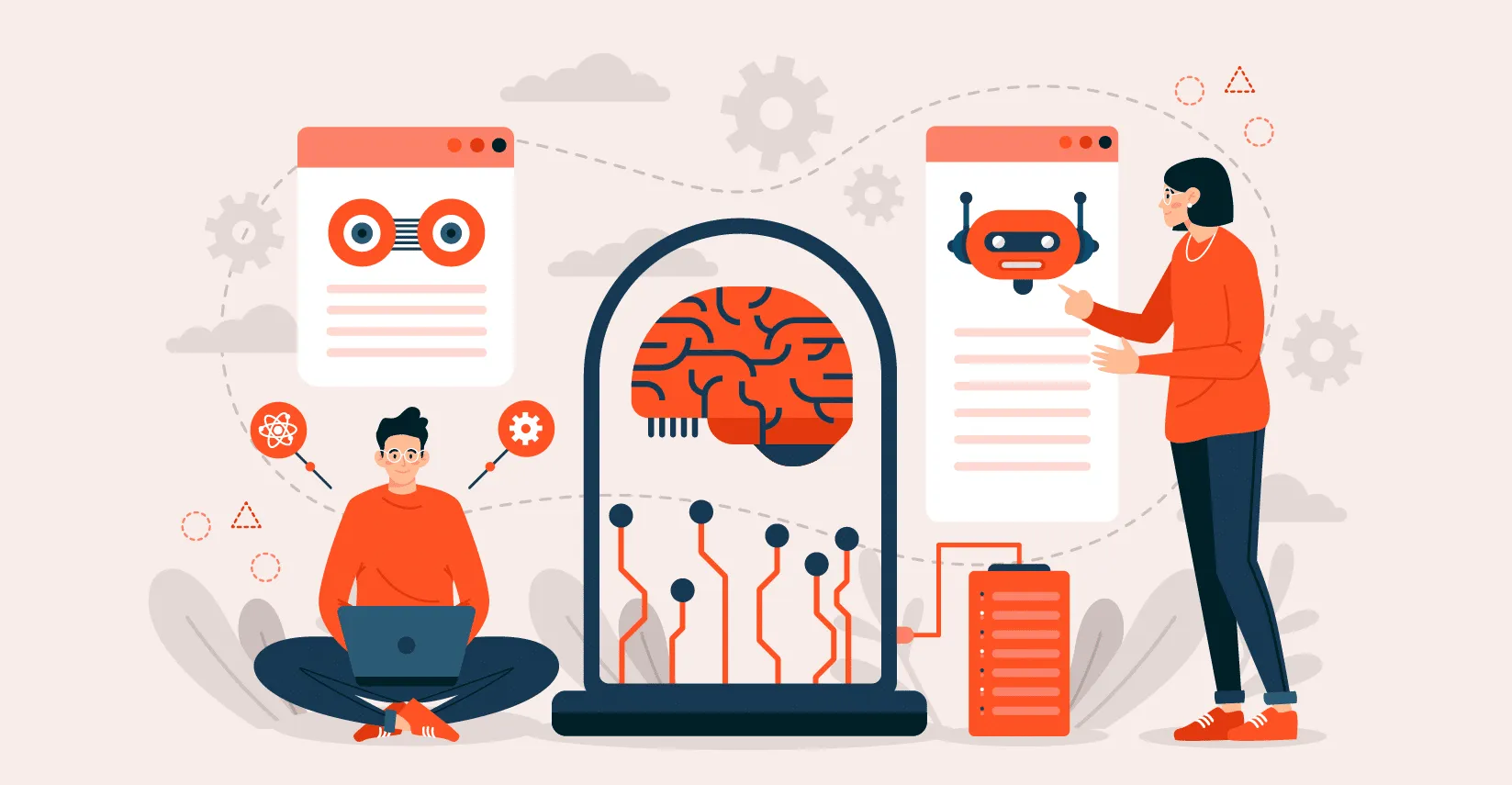
Effective testing and iteration involve:
- A/B and multivariate testing: Running multiple versions of AI-generated content or campaigns to determine which delivers the best engagement, conversion, or retention metrics.
- Performance monitoring dashboards: Tracking KPIs such as time-to-market, ROI, customer satisfaction, and content accuracy to evaluate the effectiveness of generative AI in eCommerce applications.
- Model retraining cycles: Regularly updating AI models with new data to prevent stagnation and maintain contextual accuracy.
- Human-in-the-loop feedback: Combining machine intelligence with human judgment to validate AI-generated outcomes, particularly for creative and strategic decisions.
- Scalability and optimization: Expanding successful pilots into broader implementations across departments or regions, while continuously refining workflows.
Testing and iteration ensure that generative AI in eCommerce remains a living, adaptive system. Instead of viewing deployment as an endpoint, organizations should treat it as an ongoing learning process—where feedback, results, and innovation constantly feed into model refinement.
A well-structured roadmap ensures that generative AI in eCommerce evolves from a concept into a tangible business asset. By following a systematic approach—identifying high-impact use cases, selecting suitable tools, integrating with existing systems, training with proprietary data, and continuously testing and improving—companies can unlock the full potential of generative AI. This not only enhances operational efficiency but also builds a foundation for creative, customer-centric growth in an increasingly AI-driven marketplace.
Building a Generative AI Workflow
Implementing generative AI in eCommerce is not just about choosing the right tools—it’s about constructing a seamless and efficient workflow that connects every step of the creative and operational process. A well-structured generative AI workflow enables businesses to transform raw product data into meaningful and engaging customer experiences at scale. From generating detailed product descriptions to creating high-quality visuals, videos, and personalized marketing campaigns, generative AI in eCommerce acts as a unified creative and analytical engine.
A comprehensive workflow ensures that each piece of content—whether visual, textual, or interactive—is connected to accurate product information and aligned with the brand’s tone, identity, and customer expectations. The goal is not just automation, but intelligent orchestration: turning data into stories, and stories into conversions. Below is a detailed breakdown of how a generative AI workflow functions and the essential components that make it effective.
From Raw Product Data → Description → Image → Video → Personalized Campaign
At the heart of generative AI in eCommerce lies the ability to turn structured and unstructured data into content that resonates with buyers. Every eCommerce business already has access to a vast reservoir of raw product data—specifications, materials, pricing, stock availability, and customer reviews. However, this data on its own lacks emotion and storytelling potential. Generative AI bridges that gap by transforming data into narratives and visuals that inspire trust and engagement.

A typical generative AI workflow follows a sequential yet interconnected path:
- Raw Product Data: The process begins with structured product information stored in PIM (Product Information Management) or ERP systems. Generative AI in eCommerce extracts relevant attributes such as product name, category, features, materials, and technical specifications. It can also ingest customer reviews and feedback to identify emotional triggers and selling points.
- AI-Generated Product Descriptions: Using large language models fine-tuned on brand-specific tone and style, generative AI in eCommerce automatically produces SEO-optimized product descriptions. These texts are clear, persuasive, and localized for different markets. Each description is designed to highlight unique value propositions, address potential buyer concerns, and enhance search engine discoverability.
- AI-Generated Images: Once the product description is created, the system passes the information to a visual generation model (often powered by diffusion or GAN architectures). Generative AI in eCommerce then generates high-resolution images showcasing the product in multiple settings—studio shots, lifestyle contexts, or seasonal themes. This process eliminates the need for traditional photography, offering cost and time savings while maintaining brand aesthetics.
- AI Video Generation: Building on the product text and imagery, generative AI creates short promotional videos or interactive product demos. The AI can synthesize voiceovers, add music, and include branding elements to produce engaging videos suitable for social media or advertising campaigns. For example, an apparel brand could generate try-on videos showing different styles and fits for each garment, tailored to specific customer demographics.
- Personalized Campaign Delivery: The final step in the generative AI workflow involves integrating the generated content into personalized campaigns. Generative AI in eCommerce combines customer data from CRM systems—such as browsing history, preferences, and past purchases—to create targeted marketing assets. Each email, landing page, and advertisement is dynamically generated and customized for the recipient, ensuring that every interaction feels personal and relevant.
This end-to-end process demonstrates the true potential of generative AI in eCommerce: the ability to turn a single data entry into a full suite of creative assets, enabling businesses to scale content production while maintaining quality and consistency.
Role of APIs and Automation Tools (Zapier, Make, Custom Connectors)
Automation is the backbone of a robust generative AI in eCommerce workflow. While the AI models handle the creative generation, APIs and integration platforms ensure that data flows smoothly between systems and processes without manual intervention. By connecting PIM, CMS, CRM, and marketing automation tools, businesses can orchestrate an uninterrupted pipeline from product creation to campaign delivery.

The key components of automation in generative AI workflows include:
- APIs (Application Programming Interfaces): APIs serve as bridges between AI models and business systems. They allow generative AI in eCommerce to pull real-time product data, push generated assets into CMS platforms, and trigger campaigns in marketing automation tools. For example, when a new product is added to a catalog, the API can automatically instruct the AI to generate descriptions, images, and videos.
- Automation Platforms (Zapier and Make): Tools like Zapier and Make (formerly Integromat) simplify the automation process by connecting applications through visual workflows. Generative AI in eCommerce can be configured to automatically send newly generated product content to eCommerce websites, marketplaces, or social channels. These tools enable non-technical teams to build complex automation sequences without requiring custom code.
- Custom Connectors and Workflows: For enterprises with unique ecosystems, custom connectors provide tailored integrations between proprietary systems and AI platforms. For example, a retailer might build a connector between its PIM system and a generative AI content platform that ensures metadata consistency and asset synchronization. These custom solutions guarantee that generative AI in eCommerce remains fully aligned with business-specific workflows and compliance requirements.
Automation not only increases efficiency but also ensures scalability. As businesses expand their product lines and customer bases, a well-integrated generative AI system can automatically keep up with the growing demand for content without requiring additional manpower or time.
Quality Assurance
While automation and AI creativity can dramatically accelerate workflows, maintaining quality and brand integrity remains paramount. A well-designed quality assurance (QA) layer ensures that generative AI in eCommerce consistently produces outputs that meet human standards for accuracy, tone, and aesthetics. The QA process combines automated evaluation mechanisms with human oversight to strike a balance between speed and precision.

Key quality assurance measures include:
- Content validation and verification: Generative AI outputs should be automatically checked for factual accuracy, completeness, and compliance with brand guidelines. For example, product specifications and prices must match real data, while language and claims must align with brand tone and regulatory standards.
- Human-in-the-loop review: Despite AI’s sophistication, human editors play an essential role in reviewing and approving content before publication. Teams can fine-tune generative AI in eCommerce models based on feedback, ensuring continuous improvement.
- Bias and ethical review: AI-generated content must be audited to prevent unintended bias or exclusionary messaging. A proper QA process helps identify and correct these issues, ensuring fair and inclusive representation across all content.
- Visual and stylistic consistency: Generative AI in eCommerce should produce visuals and videos that reflect the brand’s established color palette, typography, and aesthetic guidelines. AI outputs can be automatically compared against design templates to ensure uniformity across platforms.
- Performance monitoring: Post-publication metrics—such as click-through rates, engagement levels, and conversion data—can be used to evaluate content effectiveness. Generative AI systems can learn from these results, refining future outputs to improve quality and impact.
A strong QA framework ensures that the creativity and scalability offered by generative AI in eCommerce are balanced with accuracy and accountability. As businesses automate more creative tasks, quality assurance becomes the guardian of trust, ensuring that AI-generated content enhances rather than compromises brand credibility.
Data Governance and Model Training
Data is the lifeblood of generative AI in eCommerce. Every product description, image, review, and interaction contributes to the vast ecosystem of information that enables AI to generate personalized, intelligent, and creative outputs. However, the success of generative AI in eCommerce depends not only on how much data is available, but on how well that data is managed, governed, and trained. Without proper structure, privacy, and ethical oversight, even the most advanced AI systems can produce inconsistent or non-compliant results.
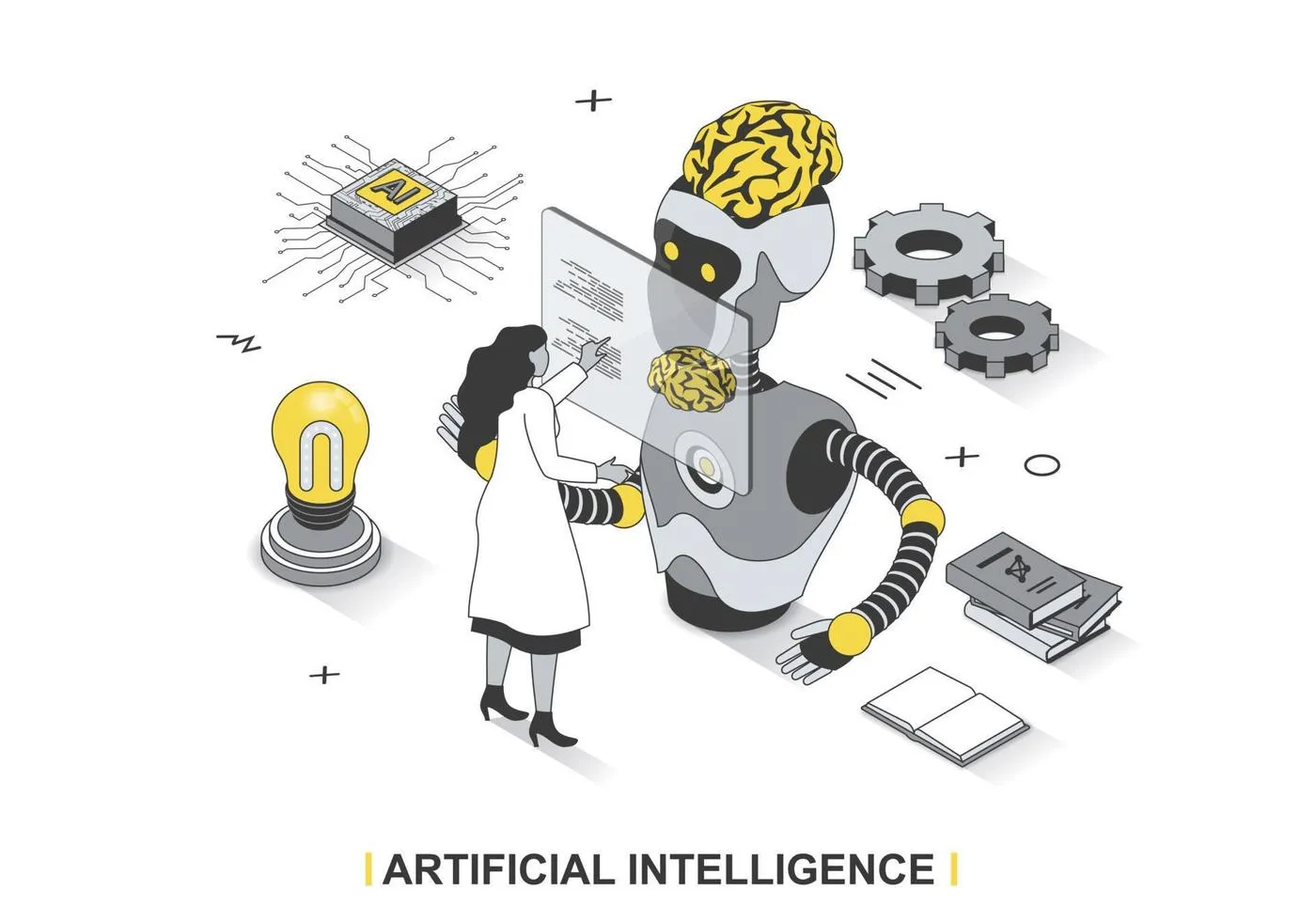
In a world where customers expect personalization and transparency, businesses must build generative AI frameworks grounded in responsible data practices. This means implementing robust governance policies, leveraging high-quality proprietary data, and ensuring all model training processes comply with global data protection laws such as GDPR (General Data Protection Regulation) and CCPA (California Consumer Privacy Act). When done correctly, effective data governance and model training not only protect the brand’s integrity but also enhance the quality, creativity, and accuracy of generative AI in eCommerce outputs.
Using Internal Product Data, Reviews, and Customer Behavior as Training Sources
One of the greatest advantages of generative AI in eCommerce is its ability to learn from a company’s own ecosystem of data. Unlike generic AI models trained on public datasets, business-specific AI systems can be fine-tuned using proprietary data—turning internal information into a powerful competitive advantage. This allows the AI to generate outputs that are not only accurate but contextually relevant to the brand’s tone, target audience, and product offerings.
The most valuable data sources for training generative AI in eCommerce include:
- Product Information Management (PIM) data: Structured product data—such as attributes, dimensions, materials, pricing, and inventory—forms the foundation for accurate content generation. When connected to generative AI, this data enables the system to produce detailed and consistent product descriptions, comparison charts, and specifications.
- Customer reviews and feedback: Unstructured data from reviews, comments, and surveys provides insight into customer sentiment, preferences, and pain points. By analyzing this information, generative AI in eCommerce can craft more empathetic marketing messages and anticipate customer needs. For example, if customers consistently highlight “durability” as a selling point, AI can emphasize that feature across future descriptions and campaigns.
- Behavioral and transactional data: Tracking customer interactions—such as clicks, browsing history, and purchase frequency—allows AI models to predict trends and personalize content. Generative AI in eCommerce uses these behavioral insights to tailor recommendations, email campaigns, and even dynamic product visuals that align with each shopper’s interests.
- Customer service and chat transcripts: Conversations with customers contain valuable context about expectations and recurring issues. Training AI models on this data enables them to handle inquiries more intelligently and generate proactive responses that align with brand tone and customer intent.
- Historical campaign and performance data: Past marketing and sales performance data can train AI systems to identify what types of content, visuals, and promotions drive engagement. This improves future generative outputs by aligning them with proven success metrics.
When these internal data sources are unified and integrated into a central repository, they form a continuously learning feedback loop. Generative AI in eCommerce evolves from simply automating content creation to becoming a strategic intelligence engine capable of predicting customer behavior, optimizing performance, and continuously improving creative quality.
However, businesses must balance innovation with control. Not all data should be used indiscriminately; data quality and relevance are paramount. Training models on outdated, biased, or incomplete data can lead to inaccuracies or brand misalignment. Therefore, implementing a robust data curation process—filtering, labeling, and structuring datasets before feeding them into the AI—is essential for ensuring reliability and performance.
Maintaining Data Privacy and Compliance (GDPR, CCPA)
As generative AI in eCommerce becomes increasingly integrated into customer-facing operations, maintaining privacy and regulatory compliance is not just a best practice—it is a legal and ethical imperative. Since generative AI systems often handle large volumes of sensitive customer information, businesses must ensure that every step of the data lifecycle—from collection to model training—adheres to established privacy frameworks.
Two of the most critical global regulations impacting generative AI in eCommerce are:
- GDPR (General Data Protection Regulation): Enforced across the European Union, GDPR requires that businesses obtain explicit consent before collecting personal data and that users retain the right to access, correct, or delete their information.
- CCPA (California Consumer Privacy Act): This U.S. regulation mandates similar rights for California residents, including transparency around data collection and the option to opt out of data sharing.
To align generative AI in eCommerce with these privacy standards, organizations should implement the following governance measures:
- Data minimization: Collect and use only the data necessary for a specific AI task. Limiting the scope of data reduces exposure and ensures compliance with privacy regulations.
- Anonymization and pseudonymization: Before using customer data for AI training, personally identifiable information (PII)—such as names, emails, or addresses—should be anonymized. This allows models to learn from behavioral patterns without compromising privacy.
- Informed consent: Customers must be fully aware of how their data will be used. Generative AI in eCommerce systems should be transparent about data collection and provide easy mechanisms for users to manage their consent preferences.
- Data access controls: Implement strict access management policies to ensure that only authorized personnel can handle or view sensitive data. All data operations should be logged for accountability.
- Regular audits and compliance reviews: Ongoing evaluations of data pipelines and AI training processes help identify potential privacy risks early and ensure continuous adherence to regulatory standards.
- Third-party vendor compliance: If external AI tools or data processors are used, companies must ensure that those vendors also comply with GDPR, CCPA, and equivalent global standards.
In addition to compliance, ethical data governance builds customer trust—a cornerstone of modern eCommerce. When shoppers know their data is handled responsibly, they are more likely to engage with AI-powered personalization and share feedback that further enriches the system. This transparency creates a virtuous cycle where privacy and performance coexist.
Finally, businesses must recognize that data privacy is not static; laws evolve, and technology changes rapidly. Generative AI in eCommerce should therefore operate on adaptable governance frameworks capable of responding to new regulations and ethical expectations. Establishing an internal data ethics board, setting clear policies for AI accountability, and documenting all training and decision-making processes are essential steps in maintaining long-term trust and compliance.
Human-in-the-Loop and Quality Control
While automation and scalability define the power of generative AI in eCommerce, the human element remains indispensable. No matter how advanced a system becomes, creativity, empathy, and contextual understanding are qualities that machines still struggle to replicate fully. Human-in-the-loop (HITL) systems address this balance by combining the speed and intelligence of AI with the judgment, ethics, and creativity of human experts. In eCommerce, this collaboration ensures that the content, visuals, and recommendations produced by generative AI in eCommerce meet the highest standards of brand integrity, quality, and authenticity.

By incorporating human oversight at strategic points in the workflow, businesses can fine-tune generative AI systems, detect potential issues, and maintain brand voice consistency across all platforms. Human-in-the-loop frameworks not only improve quality control but also foster a cycle of continuous improvement, where human feedback becomes part of the AI’s learning process. This dynamic interplay between automation and human supervision is what turns generative AI in eCommerce from a tool into a trusted creative partner.
Balancing Automation with Creative Supervision
The power of generative AI in eCommerce lies in its ability to automate large-scale content creation and personalization—tasks that would otherwise require massive human effort. However, full automation without oversight can lead to inaccuracies, brand inconsistency, or even reputational risks. For instance, an AI system might generate product descriptions with factual errors or produce visuals that misrepresent the product’s color or design. This is where human supervision becomes critical.
Balancing automation with creative supervision ensures that generative AI in eCommerce delivers not only speed but also quality and emotional resonance. Businesses can implement this balance through a structured framework that combines human creativity and AI efficiency in complementary ways:
- Strategic creative oversight: Human teams define the brand’s creative direction, tone, and messaging standards. Generative AI executes within those parameters, producing drafts that align with the company’s guidelines. This ensures every output reflects the brand’s identity while leveraging AI’s scalability.
- Editorial review and refinement: While AI can generate product descriptions, blogs, or ad copy, human editors review the results to verify accuracy, coherence, and emotional appeal. Editors refine phrasing, add nuance, and ensure that the AI-generated content feels natural and persuasive.
- Visual validation: Generative AI in eCommerce can produce images and videos based on text prompts, but human designers review outputs for aesthetic alignment, brand consistency, and compliance with advertising standards before publishing.
- Contextual decision-making: Humans intervene in situations requiring ethical judgment or cultural awareness. For example, an AI-generated campaign for a global audience may unintentionally use symbols or language that are inappropriate in specific regions. Human supervision helps identify and correct such errors before release.
- Scenario-based automation: Businesses can set rules for when human review is mandatory. For example, high-visibility content (homepage banners, brand campaigns) undergoes manual review, while low-impact content (SEO descriptions or metadata) can be fully automated.
By maintaining human oversight within the workflow, companies ensure that generative AI in eCommerce amplifies creative capacity without compromising quality. The human role transitions from manual production to strategic curation—guiding AI to create content that resonates authentically with audiences.
This hybrid model also helps foster trust within organizations. Employees who participate in the creative supervision process view AI not as a replacement but as an enhancement to their work, fostering collaboration rather than resistance to new technology.
Feedback Loops for Continuous Improvement
A hallmark of generative AI in eCommerce is its ability to learn and evolve. However, the quality of its evolution depends on the feedback it receives. Feedback loops are structured systems where human input continuously refines AI models, ensuring that the technology becomes more aligned with brand goals, customer expectations, and evolving market trends. These loops are the foundation of continuous improvement, transforming generative AI from a static engine into a dynamic, self-improving ecosystem.
Incorporating feedback loops into generative AI in eCommerce involves several critical steps:
- Human evaluation and annotation: After AI generates outputs—be it text, visuals, or campaigns—human reviewers evaluate them based on defined criteria such as accuracy, tone, visual coherence, and engagement performance. These evaluations are then used to fine-tune the AI’s future responses.
- Reinforcement learning with human feedback (RLHF): One of the most effective techniques for improving AI systems, RLHF involves training AI models using human-generated feedback. Reviewers rank or score AI outputs, and the system adjusts its behavior to produce better results in subsequent iterations. This process ensures that generative AI in eCommerce continues to adapt to brand preferences and audience reactions.
- Performance analytics integration: Feedback is not limited to human review—real-world performance data from customer interactions also plays a vital role. Click-through rates, time on page, and conversion metrics can feed into the AI model, teaching it which types of content perform best.
- Collaborative feedback dashboards: To streamline communication, businesses can develop centralized dashboards where marketing, creative, and product teams submit AI feedback. This creates transparency and collective ownership of AI-driven content outcomes.
- Error correction and anomaly detection: When the AI produces inaccurate or off-brand outputs, humans flag these as anomalies. Over time, generative AI in eCommerce learns from these corrections, reducing similar errors in the future.
- Iterative retraining cycles: Periodic retraining of AI models using updated data, refined prompts, and cumulative feedback ensures continuous optimization. The more diverse and structured the feedback, the more sophisticated and accurate the AI becomes.
These feedback loops are not simply about correction—they are about collaboration. They establish an ongoing dialogue between humans and machines, where AI becomes increasingly attuned to business needs and creative direction.
Over time, this process leads to exponential improvement in output quality. Product descriptions become more natural, visual assets more aesthetically aligned, and personalized recommendations more emotionally intelligent. Generative AI in eCommerce evolves from a one-size-fits-all engine to a brand-specific creative partner capable of anticipating and adapting to nuanced demands.
Ethics, Limitations, and Challenges of Generative AI in eCommerce
Generative AI in eCommerce represents one of the most transformative advancements in digital business. Its ability to generate text, images, videos, and even personalized campaigns has revolutionized how brands communicate and operate. Yet, alongside its immense potential come significant ethical and operational challenges. As businesses automate creativity and decision-making, they face complex questions around authenticity, data reliability, ownership, fairness, and privacy.

The ethical implementation of generative AI in eCommerce requires more than technical precision—it demands accountability, transparency, and governance. AI-generated outputs can inadvertently spread misinformation, reinforce biases, or infringe on intellectual property rights if not carefully managed. Additionally, new global regulations such as the EU AI Act are reshaping how organizations must deploy and monitor AI systems.
Data Accuracy and Authenticity
The success of generative AI in eCommerce depends heavily on the accuracy and reliability of the information it produces. When AI models generate content—whether product descriptions, promotional text, or customer-facing visuals—there is always a risk of “hallucination,” a term used to describe instances where the AI produces plausible but incorrect or misleading information.
The Risk of Hallucination in AI-Generated Content
Hallucination is one of the most well-documented limitations of generative AI in eCommerce. It occurs when AI models, lacking factual grounding, fabricate information that sounds correct but has no basis in real data. For example, an AI system might generate an incorrect material composition for a clothing item, suggest nonexistent features in an electronic product, or create inaccurate sizing recommendations. These errors, while seemingly minor, can erode consumer trust, increase return rates, and expose businesses to liability.

Hallucination often arises due to incomplete or inconsistent data sources, outdated training datasets, or improper prompt design. Since generative AI in eCommerce relies on massive language and vision models trained on both proprietary and open data, any misinformation or ambiguity within these datasets can propagate across thousands of product listings or campaigns.
Ensuring Factual Accuracy for Product Specifications
To counteract this risk, businesses must implement robust verification systems. Generative AI in eCommerce should always reference verified internal databases—such as Product Information Management (PIM) or ERP systems—before generating content. Each output must be cross-checked automatically or manually against verified data points.
Furthermore, combining natural language generation with structured data validation ensures factual precision. For example, an AI description generator can be programmed to pull attributes like size, price, and color directly from a master dataset, preventing fabricated claims.
Human-in-the-loop systems also play a crucial role here. By combining AI automation with editorial oversight, brands can maintain both speed and authenticity. Ultimately, the key to maintaining trust in generative AI in eCommerce lies in data grounding—ensuring that every piece of generated content is rooted in verifiable, up-to-date information.
Copyright, Ownership, and Legal Risks
The use of generative AI in eCommerce raises complex legal and ethical questions surrounding ownership, copyright, and liability. As AI systems create product descriptions, marketing visuals, and advertisements autonomously, businesses must determine who owns the resulting intellectual property and who bears responsibility for potential infringement.
Who Owns AI-Generated Content?
Ownership of AI-generated content is a gray area in global law. In most jurisdictions, copyright protection applies only to works created by humans, not machines. This means that content produced entirely by generative AI in eCommerce may not qualify for traditional copyright protection, leaving businesses vulnerable if competitors reuse the same material.

To mitigate this, organizations often adopt hybrid authorship models, where human intervention—such as editing or reviewing the AI’s output—is documented to establish human contribution and ownership. By maintaining oversight and adding creative input, brands can claim partial copyright protection while ensuring accountability for the AI-generated content.
Handling Copyrighted Training Data and Third-Party Model Usage
Another challenge lies in the datasets used to train AI models. Many generative systems are trained on publicly available web data, which may include copyrighted material such as product photos, ad copy, or blog content. Using generative AI in eCommerce without verifying dataset provenance can expose companies to legal disputes if copyrighted material is inadvertently reproduced.
To address this, businesses should:
- Partner with AI providers who maintain transparent data sourcing policies.
- Use proprietary data for fine-tuning, reducing reliance on third-party training sets.
- Establish internal audit trails documenting how and where generative content is produced.
Disclosure and Labeling Requirements for AI-Generated Content
With the rise of regulatory scrutiny, some jurisdictions now require clear labeling of AI-generated content. The European Union’s AI Act, for instance, mandates transparency in cases where consumers might reasonably believe content is human-created. For generative AI in eCommerce, this means explicitly disclosing when product descriptions, recommendations, or visuals are AI-generated. Transparency not only ensures compliance but also fosters trust between businesses and consumers.
Bias and Fairness in Generative Outputs
Generative AI in eCommerce is only as fair as the data it is trained on. If training datasets reflect societal biases or imbalances, the AI’s outputs can unintentionally perpetuate stereotypes, exclusion, or cultural insensitivity. This risk is especially significant in retail, where product imagery, model representation, and marketing language influence consumer perception and brand reputation.
Representation Bias in Visuals and Descriptions
Bias in generative AI can manifest in subtle yet damaging ways. For instance, AI-generated product visuals might overrepresent certain ethnicities, body types, or genders, while underrepresenting others. Similarly, automated descriptions may use gendered language or cultural references that exclude segments of the audience. These biases can alienate customers and harm brand inclusivity.

Generative AI in eCommerce must therefore be trained on diverse and representative datasets. Businesses should regularly audit AI outputs to detect and correct biased language or visuals. Additionally, implementing fairness metrics—quantitative measures of representation and inclusion—can help track progress and accountability.
Building Diverse Datasets to Ensure Inclusivity
To promote fairness, companies should curate training data that reflects diversity across age, gender, ethnicity, and cultural context. This can include sourcing images from multiple regions, translating descriptions into multiple languages, and validating tone appropriateness for different markets.
Human review panels composed of diverse team members can further enhance inclusivity by evaluating whether generative AI outputs align with brand ethics. When trained and monitored responsibly, generative AI in eCommerce can actually become a force for inclusion—creating personalized experiences that resonate with all audiences equally.
Privacy and Security
As personalization becomes central to customer experience, generative AI in eCommerce relies on vast amounts of user data to generate tailored recommendations, dynamic visuals, and individualized marketing campaigns. However, the same data that fuels personalization also introduces serious privacy and security risks if mishandled.
Protecting Customer Data Used for Personalization
Generative AI systems often analyze sensitive data such as browsing behavior, purchase history, and geographic information to deliver personalized content. While this can enhance engagement, it also creates vulnerabilities if data storage or transmission is not adequately protected. Businesses must adopt encryption, anonymization, and strict access controls to prevent unauthorized use or leaks of personal data.

Additionally, customers should always be informed about how their data is used to train AI systems or personalize experiences. Transparent consent mechanisms, coupled with the option to opt out, are essential for maintaining trust.
Compliance with GDPR, CCPA, and AI Act
Generative AI in eCommerce must operate within a rapidly evolving regulatory landscape. Compliance with data protection frameworks such as GDPR in the EU and CCPA in California is non-negotiable. These regulations require explicit consent for data use, user rights to data deletion, and transparency regarding data handling practices.
The upcoming EU AI Act introduces additional requirements specifically targeting AI systems, including risk classification, documentation, and human oversight. Businesses using generative AI in eCommerce will need to establish internal AI governance frameworks that document how AI decisions are made, how data is managed, and how potential risks are mitigated.
Beyond legal compliance, ethical responsibility should guide every AI deployment. Privacy-by-design principles—where security and transparency are embedded from the start—ensure that personalization enhances rather than compromises user trust.
Future of Generative AI in eCommerce
Generative AI in eCommerce is rapidly moving from an experimental tool to a foundational pillar of digital commerce. Its capabilities extend far beyond automating product descriptions or marketing campaigns—it is evolving into a creative intelligence that can reimagine every stage of the shopping journey. From personalized storefronts that change in real time to immersive retail experiences blending AI with AR, VR, and blockchain, generative AI in eCommerce is paving the way toward a future where digital commerce becomes hyper-personalized, adaptive, and emotionally engaging.
As algorithms become more context-aware and multimodal, generative AI in eCommerce will power stores that think, design, and respond autonomously. It will create unique user experiences for every visitor, anticipate demand before it arises, and operate as a co-creator alongside human teams. This future of AI-driven commerce is not about replacing people—it’s about amplifying human creativity, speed, and insight to deliver experiences that are more intelligent, inclusive, and meaningful than ever before.
The Rise of Hyper-Personalized Stores
One of the most transformative developments enabled by generative AI in eCommerce is the emergence of hyper-personalized digital stores—platforms that tailor every aspect of the shopping experience to the preferences, behaviors, and emotional states of individual users. Unlike traditional personalization, which relies on static data such as purchase history or demographics, generative AI can dynamically adapt layouts, visuals, and tone of communication in real time.
Generative Storefronts Adapting Layout, Visuals, and Tone per User
Generative AI in eCommerce allows each customer to interact with a store uniquely designed for them. Upon visiting an online shop, AI models analyze behavioral signals such as browsing patterns, dwell time, and even emotional cues (via facial or voice recognition) to generate a customized storefront layout.

For example:
- The product arrangement on the homepage might adjust according to previous purchase history or time of day.
- Color palettes, typography, and imagery can shift to reflect the customer’s mood or cultural background.
- Tone of language in product descriptions can be rephrased for different personas—formal for business shoppers, casual for younger audiences, and empathetic for lifestyle brands.
Generative AI in eCommerce creates an environment that feels not just personalized but alive—responding to the customer’s intentions and context in real time. These adaptive experiences enhance engagement, reduce decision fatigue, and increase conversion rates by making every interaction feel tailor-made.
Real-Time A/B Testing with Generative Variations
Traditionally, A/B testing is a manual and time-consuming process that requires designing multiple variations and analyzing results post-launch. With generative AI in eCommerce, experimentation becomes continuous and autonomous. The AI can instantly generate multiple versions of product pages, banners, or email templates, test them in real time, and learn from user interactions.
Instead of marketers manually deciding which creative works best, generative AI identifies winning combinations of visuals, copy, and CTAs dynamically. Over time, the system refines itself, creating an ever-improving cycle of optimization. This “living” marketing ecosystem ensures that every visitor sees the version of the store most likely to resonate with them, leading to higher engagement and sales performance.
The rise of hyper-personalized stores represents a shift from static eCommerce design to generative commerce—where every click, scroll, and gesture shapes the experience in real time, powered by adaptive intelligence.
Integration with Other Emerging Technologies
The next stage of evolution for generative AI in eCommerce lies in its convergence with other cutting-edge technologies. As AI systems become multimodal—understanding and generating text, images, voice, and 3D content—they are merging with IoT, AR/VR, blockchain, and edge computing to create immersive and trustworthy digital ecosystems. This technological synergy is redefining what online shopping can be, turning passive transactions into interactive, sensory experiences.
IoT and Edge AI Synergies
The combination of Internet of Things (IoT) and generative AI in eCommerce enables smarter, context-aware retail ecosystems. Connected devices—from smart mirrors to wearable tech—can collect real-time data about user habits and preferences. Edge AI then processes this data locally, reducing latency and ensuring immediate responsiveness.
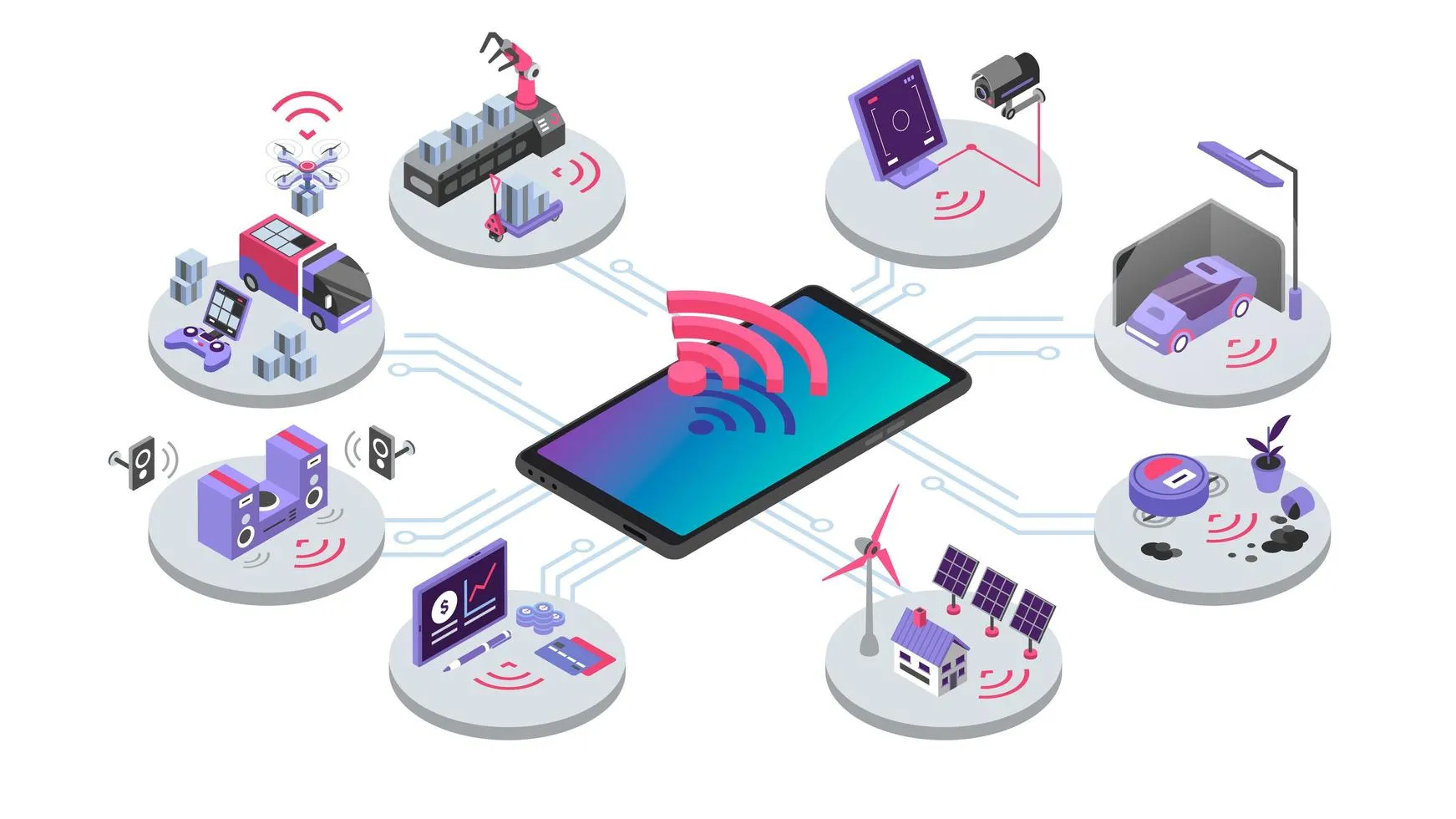
Generative AI can use these insights to automatically adjust offers, recommendations, or store visuals based on environmental context. For instance, a smart home device could trigger personalized promotions for coffee pods when it detects the household’s stock is low. This synergy allows brands to deliver hyper-relevant, predictive experiences without compromising user privacy.
Generative AI + AR/VR for Immersive Retail
Augmented and Virtual Reality are reshaping the online shopping experience, and generative AI in eCommerce elevates this transformation by dynamically creating 3D content and environments. Customers can now explore virtual showrooms where products are visualized in realistic settings generated on the fly.
- A customer shopping for furniture can see how a sofa fits into their living room through AI-generated AR visuals.
- A fashion shopper can try on clothing through generative 3D avatars that replicate body shape, texture, and lighting conditions.
Generative AI in eCommerce bridges imagination and reality by turning product discovery into a fully interactive experience—one that feels personal, cinematic, and immediate.
AI Avatars for Virtual Customer Service and Live Shopping
AI-powered avatars are emerging as the next evolution of digital customer engagement. By combining generative AI with natural language processing and voice synthesis, eCommerce platforms can deploy realistic virtual sales associates capable of guiding customers through their shopping journeys.
These avatars can:
- Offer real-time product recommendations.
- Provide post-purchase assistance.
- Participate in live-stream shopping events with human-like communication.
Generative AI in eCommerce gives these avatars a unique advantage: adaptability. They can modify their expressions, language, and gestures to match customer emotions and preferences, creating a conversational experience that feels genuinely human.
Blockchain for Verifying AI-Generated Content Authenticity
As generative AI in eCommerce becomes capable of producing massive volumes of digital assets—text, images, and videos—ensuring content authenticity becomes essential. Blockchain technology can serve as a verification mechanism by recording metadata of AI-generated content, including creation date, model version, and ownership rights.

This integration ensures transparency and prevents issues like counterfeit product images or unauthorized reuse of AI-generated content. For brands, it offers proof of authenticity; for customers, it ensures trust in the content they see.
Voice and AR Commerce Enhanced by Generative Models
Voice commerce is becoming more natural and conversational with generative AI. Instead of rigid voice commands, users can describe what they want in full sentences—“Show me elegant sneakers for evening wear under $150”—and receive precise, contextually rich responses.
Similarly, in AR commerce, generative AI can overlay dynamic, AI-generated visuals into real-world environments. This fusion enables on-the-spot product visualization, allowing customers to see personalized options before making decisions. Together, voice, AR, and generative AI in eCommerce create an intuitive, immersive ecosystem that bridges digital and physical shopping.
Next-Generation Commerce Models
The future of generative AI in eCommerce is not just about better tools—it’s about reinventing how businesses operate. As AI systems evolve into creative collaborators capable of managing entire digital ecosystems, new business models are emerging that redefine efficiency, anticipation, and human-machine collaboration.
Autonomous eCommerce: AI Managing Design, Copy, Pricing, and Campaigns
Autonomous eCommerce represents the next leap forward—a world where generative AI systems manage the entire creative and operational pipeline. From designing web layouts to writing product descriptions, setting dynamic prices, and running ad campaigns, AI orchestrates it all with minimal human intervention.
Generative AI in eCommerce can:
- Continuously redesign storefronts based on real-time engagement analytics.
- Generate new product pages and campaigns without waiting for manual input.
- Adjust pricing dynamically using predictive demand modeling.
This model transforms eCommerce from reactive management to proactive automation, where AI acts as both strategist and executor. Humans shift from doing repetitive tasks to curating strategy, governance, and innovation.
Predictive Commerce: Anticipating Demand and Generating Experiences
Predictive commerce powered by generative AI in eCommerce takes personalization a step further—it anticipates what customers will want before they even express it. By analyzing browsing patterns, purchase trends, and external signals like seasonality or social media sentiment, AI can generate tailored experiences in advance.
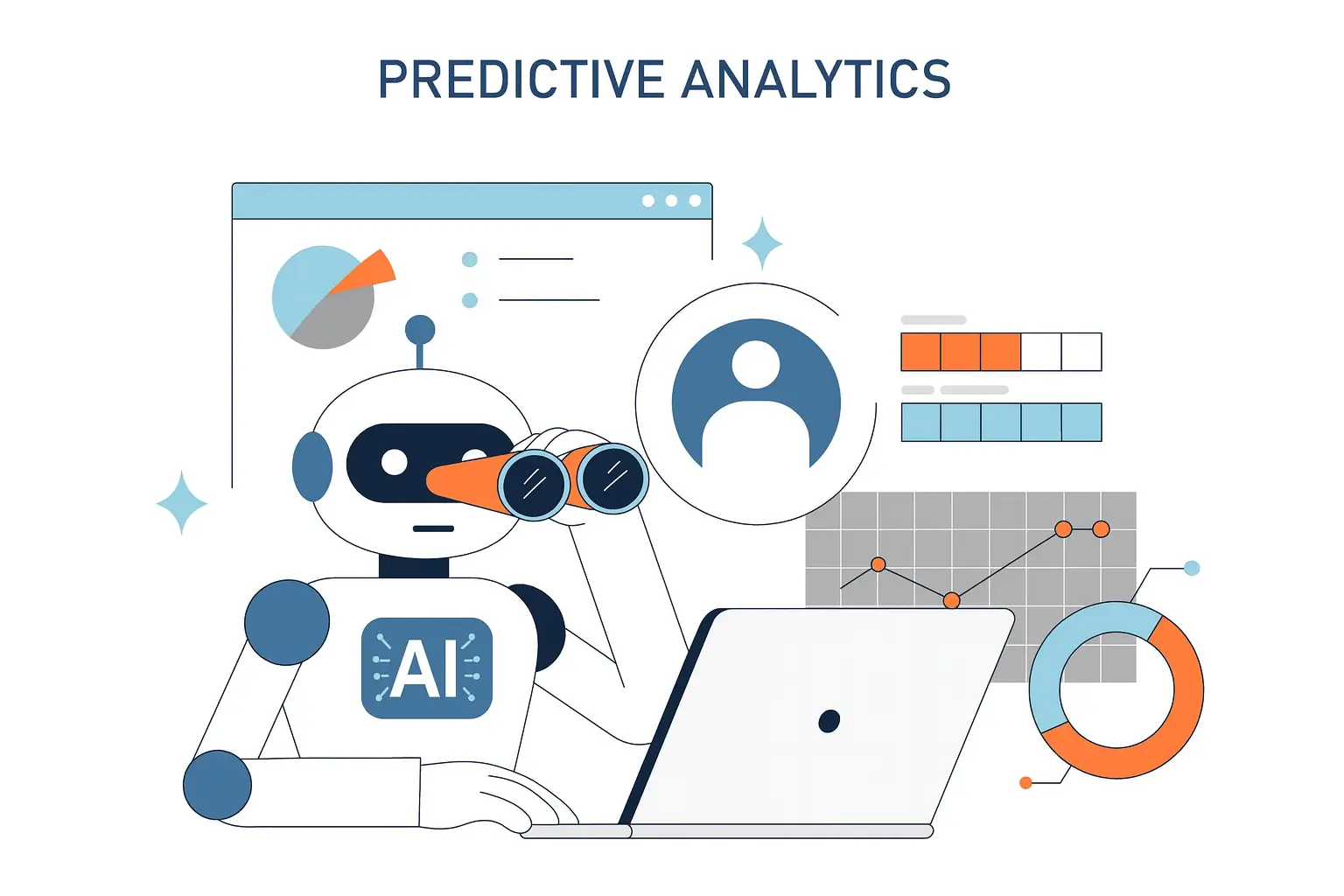
Imagine logging into an eCommerce platform where product collections, visuals, and offers have already been generated for your next purchase—based on your lifestyle, location, and previous behavior. Generative AI transforms marketing from reactive promotion into predictive engagement, delivering what the customer desires at the exact right moment.
Ethical AI Frameworks and “Co-Creation” Between Humans and Machines
The future of generative AI in eCommerce is not purely autonomous—it is collaborative. As generative systems grow more powerful, the concept of co-creation between humans and AI will become central to business innovation. Human designers, writers, and strategists will guide AI to explore creative boundaries, generating novel ideas that neither could produce alone.
At the same time, ethical AI frameworks will become essential for maintaining accountability. Transparent governance, responsible data use, and inclusivity will ensure that the evolution of generative AI in eCommerce benefits both consumers and creators.
This partnership model marks the dawn of “AI-enhanced creativity,” where machines handle scale and optimization while humans infuse empathy, storytelling, and ethics. The businesses that master this balance will lead the next generation of intelligent commerce—creative, adaptive, and responsible.
Conclusion
Generative AI in eCommerce is no longer an emerging experiment—it is the new foundation of digital transformation. Across the past four decades, eCommerce has evolved from static catalog websites to predictive, data-driven ecosystems. Now, with the rise of generative AI in eCommerce, this transformation has entered its most creative and human-centered phase. It is a shift not only in technology but in philosophy: from automating transactions to designing intelligent, emotionally resonant experiences.
Throughout this exploration, we have witnessed how generative AI in eCommerce reshapes every dimension of digital retail. It enhances content creation through natural language and visual generation, accelerates time-to-market with automation, and redefines personalization with real-time, adaptive intelligence. Businesses can now create thousands of localized product descriptions, visuals, and campaigns that align perfectly with each customer’s identity and preferences. Marketing becomes more precise, design becomes more dynamic, and commerce becomes more conversational and human.
Generative AI in eCommerce also redefines operational efficiency. By automating creative workflows, reducing reliance on manual copywriting, and generating synthetic data for modeling, it enables scalability without compromising quality. Its ability to produce and optimize A/B variations, generate contextual recommendations, and simulate entire customer journeys allows brands to operate with agility and precision at a level previously unimaginable.
Yet, amid this rapid progress, one truth remains clear: the future of generative AI in eCommerce depends on maintaining a delicate balance between automation and authenticity. While AI can craft text, images, and videos with astonishing accuracy, human intuition is still irreplaceable. The emotional tone of storytelling, the ethical lens of decision-making, and the creative spark that defines a brand’s identity must remain guided by human insight. Businesses that integrate human oversight—through feedback loops, creative supervision, and ethical governance—will ensure that their AI-driven systems remain aligned with their brand’s core values and audience trust.
Generative AI in eCommerce should not replace creativity—it should expand it. The most successful organizations of the coming decade will be those that view AI as a collaborator rather than a competitor. In these hybrid workflows, AI handles the scale and structure, while humans define purpose, empathy, and meaning. Together, they can produce commerce experiences that are not only efficient but emotionally intelligent, inclusive, and deeply personalized.



